Pea gravel walkways offer a perfect blend of natural beauty, affordability, and versatility for creating stunning garden paths. These small, rounded stones provide excellent drainage while adding texture and visual interest to outdoor spaces. From curved cottage garden trails to sleek contemporary designs, pea gravel adapts to any landscape style. The material's earth-toned color palette complements various architectural themes, while its permeable surface prevents water pooling and reduces maintenance. Whether you're connecting garden areas, creating front entrance paths, or designing backyard trails, pea gravel walkways deliver both functionality and charm that enhances your property's overall aesthetic appeal.
1. Classic Pea Gravel Walkway with Natural Stone Edging
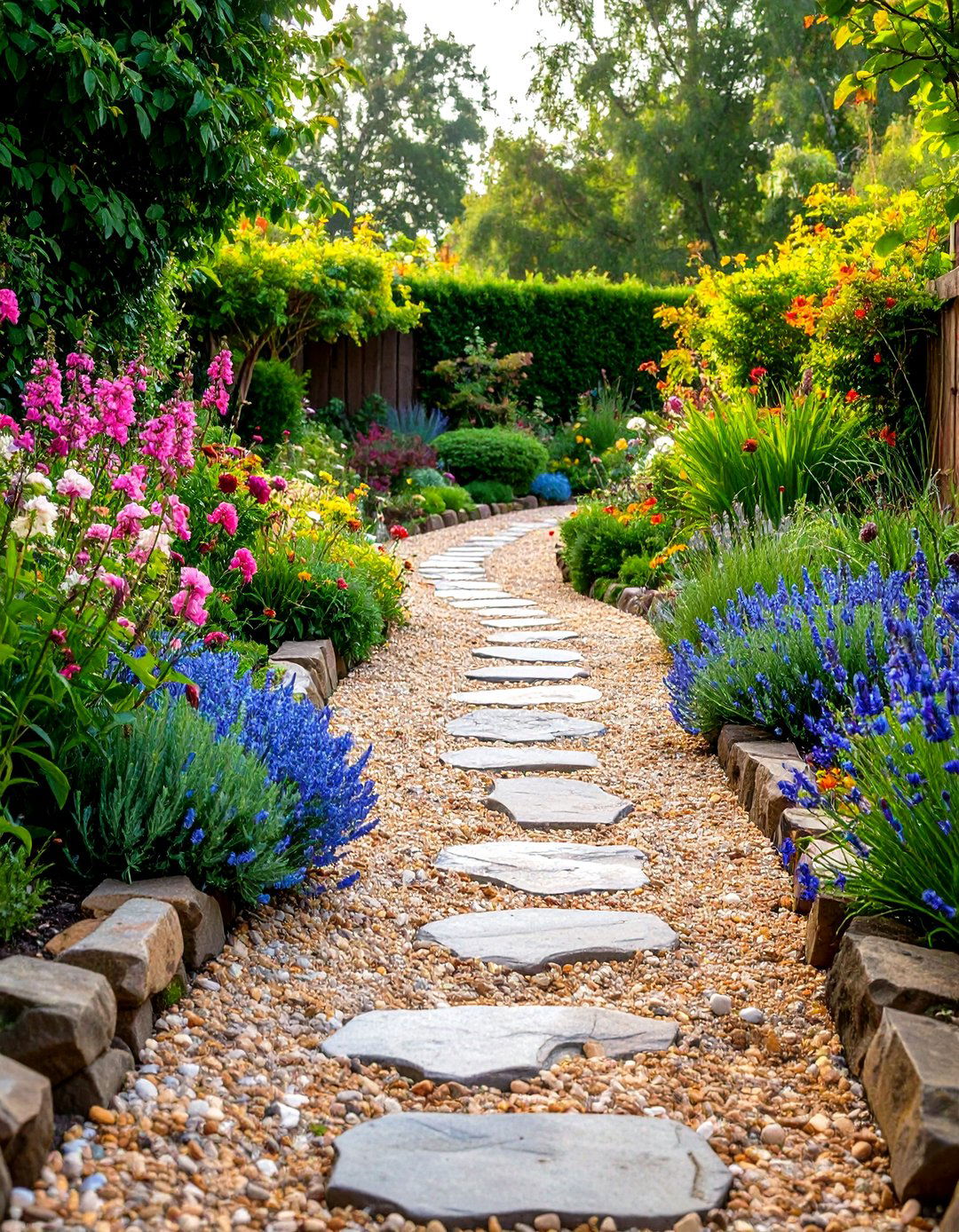
Traditional charm meets practical functionality in this timeless design featuring warm-toned pea gravel contained within natural stone borders. Large fieldstones or river rocks create organic edges that blend seamlessly with surrounding landscapes while preventing gravel migration. The neutral color palette works beautifully with cottage gardens, farmhouse settings, and established perennial borders. Installation involves laying landscape fabric, positioning stones along the pathway edges, and filling the center with a two-inch layer of gravel. This design requires minimal maintenance beyond occasional raking to keep surfaces even. The natural stone edging weathers gracefully over time, developing character that enhances the walkway's rustic appeal while providing decades of reliable containment.
2. Modern Pea Gravel Walkway with Steel Edging
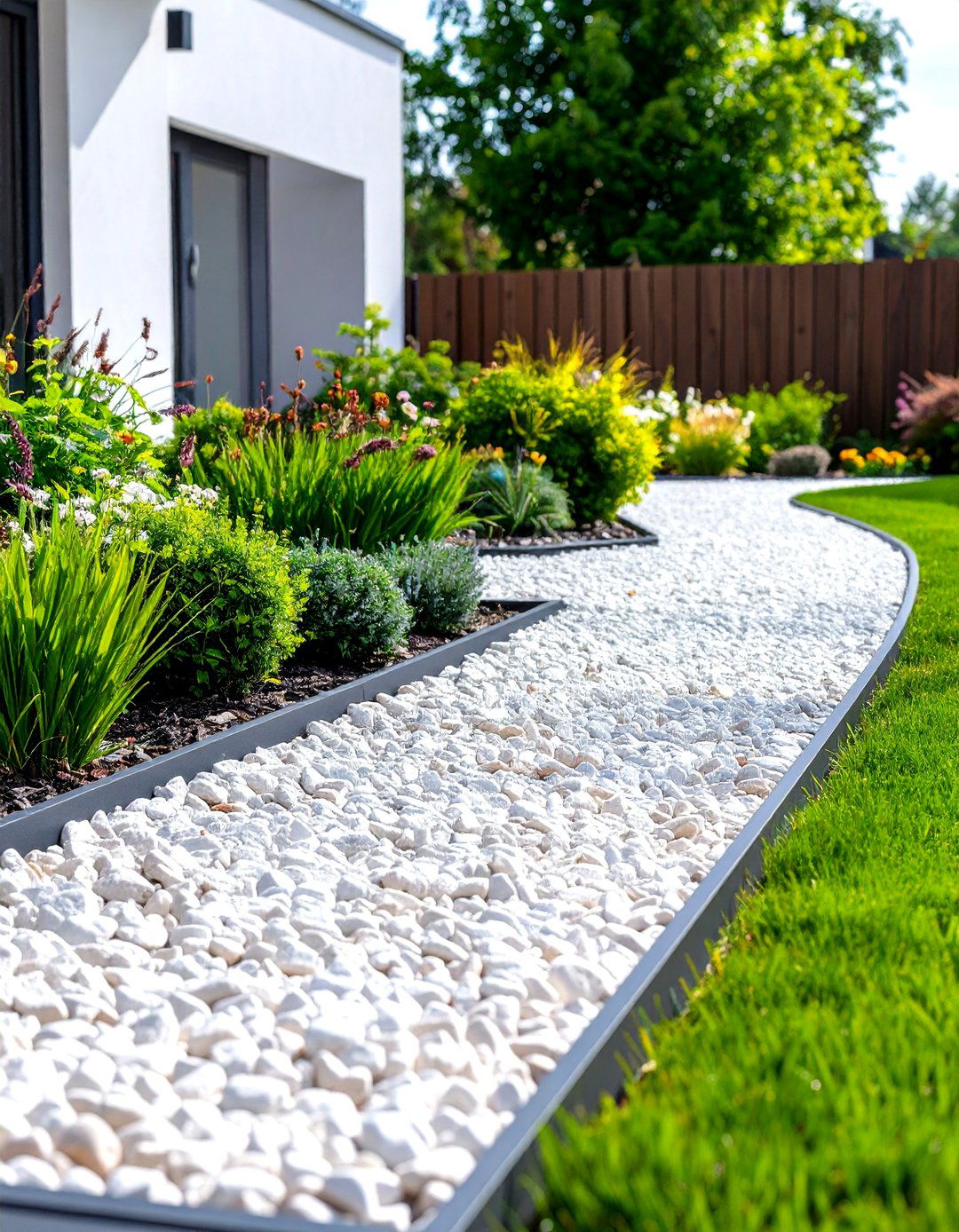
Contemporary landscapes benefit from clean lines and minimalist aesthetics found in this sleek design pairing light-colored pea gravel with galvanized steel edging. The metal borders create sharp, geometric boundaries that complement modern architecture and structured garden designs. Gray or white gravel provides sophisticated contrast against steel's industrial finish, which develops an attractive patina over time. This design works particularly well for connecting outdoor living spaces, creating entry pathways, or defining geometric garden sections. The steel edging's flexibility allows for gentle curves while maintaining clean lines. Professional installation ensures proper compaction and drainage, while the low-maintenance surface requires only periodic raking and occasional gravel replenishment to maintain its pristine appearance.
3. Curved Pea Gravel Walkway with Wooden Frame Borders
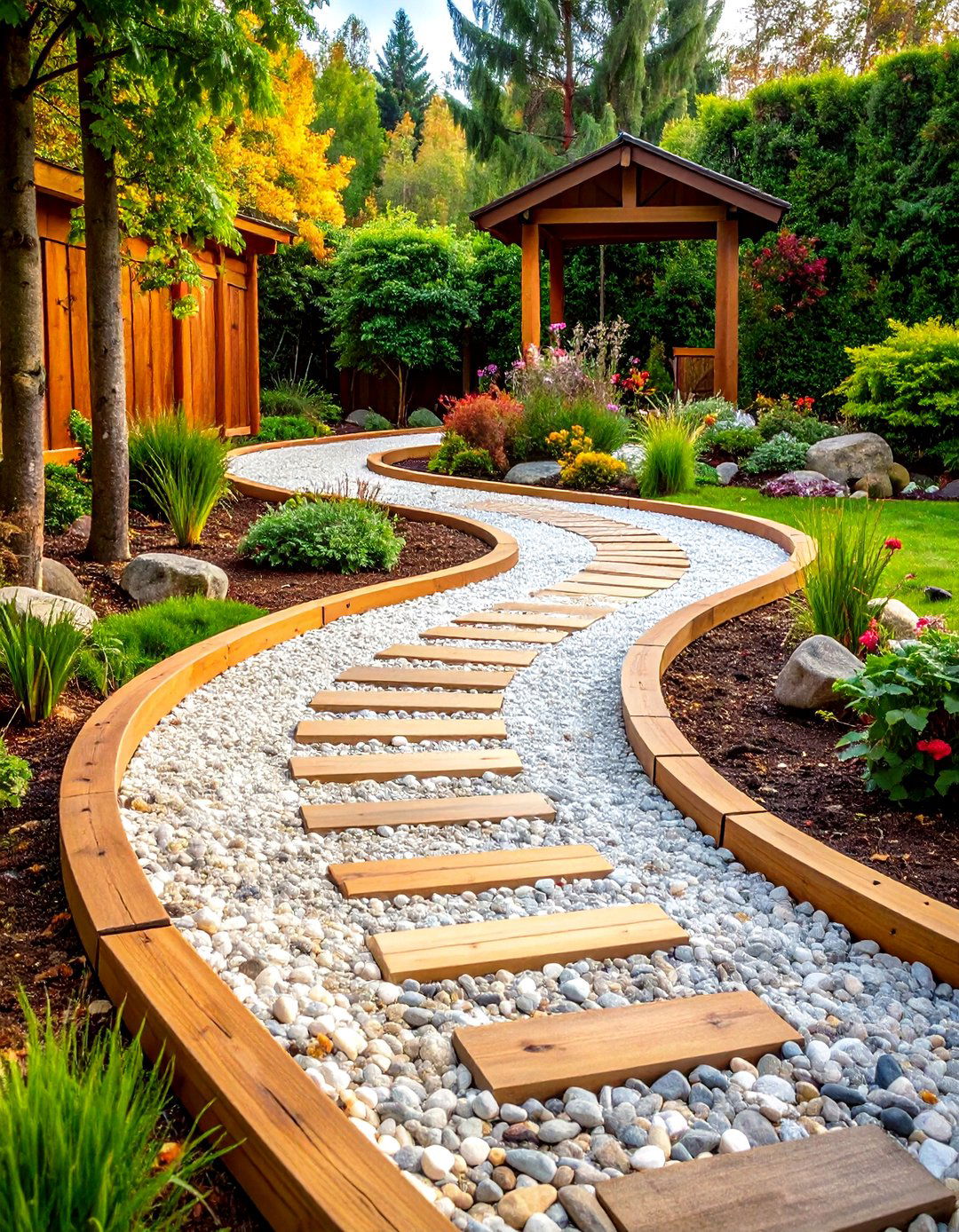
Enhance your garden's natural flow with this organic design featuring gently curving pathways bordered by weather-resistant wooden frames. Cedar or pressure-treated lumber creates warm, rustic edges that complement the earth-toned gravel while providing sturdy containment. The curved layout encourages leisurely strolls while creating visual interest and guiding visitors through different garden areas. Wooden borders age gracefully, developing silver-gray patinas that harmonize with natural surroundings. This design particularly suits cottage gardens, woodland settings, and informal landscape styles. Installation requires careful planning to achieve smooth curves, proper drainage preparation, and secure wooden edge installation. Regular maintenance includes seasonal gravel leveling and occasional wood treatment to extend the border's lifespan while preserving the pathway's charming character.
4. Stepping Stone Pea Gravel Walkway Design
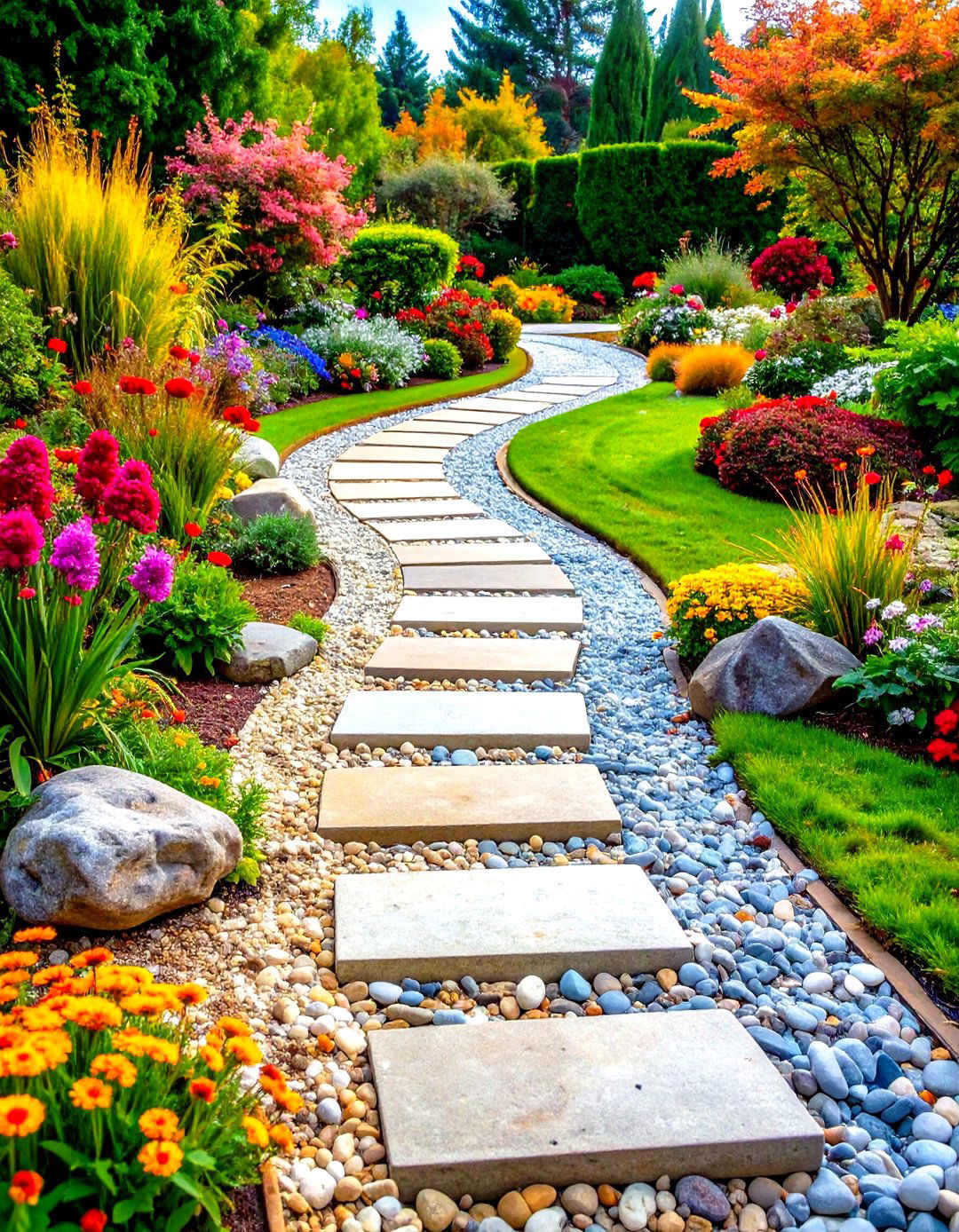
Combine stability with natural beauty by incorporating large flagstones or concrete pavers as stepping stones within your pea gravel pathway. This design provides firm footing while maintaining the gravel's permeable qualities and visual appeal. Natural flagstone offers irregular shapes and earth-toned colors that create organic patterns, while concrete pavers provide uniform spacing and contemporary clean lines. The gravel fills spaces between stones, creating cohesive surfaces that accommodate various walking paces and foot sizes. This approach works excellently for high-traffic areas where additional stability is desired without sacrificing drainage benefits. Installation requires careful stone placement at comfortable stride intervals, proper gravel depth for stability, and regular maintenance to prevent stone settling. The combination creates inviting pathways suitable for both formal and informal garden settings.
5. Multi-Level Terraced Pea Gravel Walkway
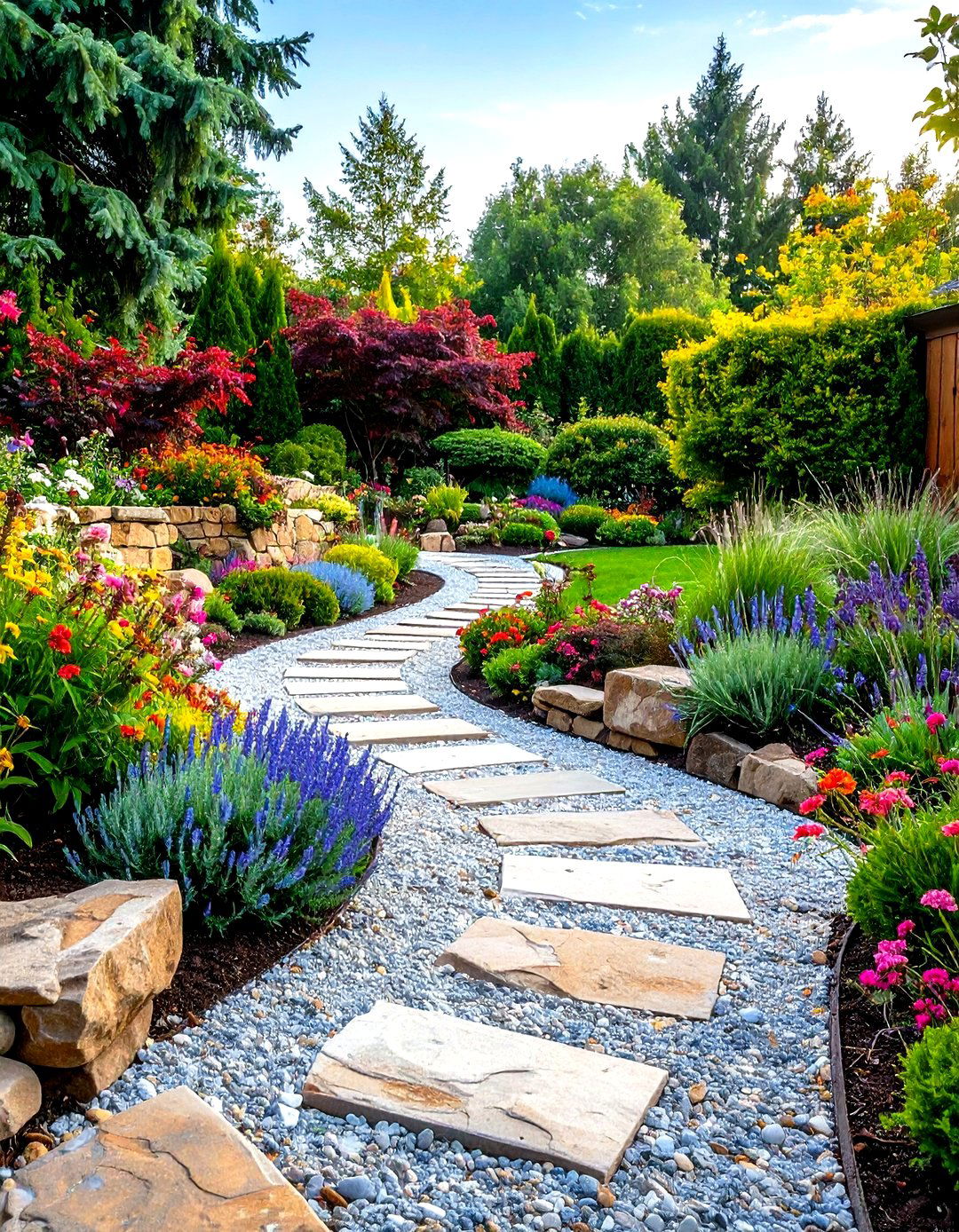
Transform sloped terrain into an elegant series of gravel terraces connected by gentle steps or retaining walls. This sophisticated design creates visual drama while solving drainage challenges common in hillside gardens. Each level features contained pea gravel surfaces with sturdy edging materials like natural stone, concrete blocks, or timber retaining walls. The terraced approach allows for strategic placement of plants, lighting, or decorative elements at each level, creating garden rooms connected by the walkway. Color-coordinated gravel maintains design continuity while different textures or sizes can define each terrace uniquely. Professional installation ensures proper drainage, structural stability, and long-term performance. This design particularly suits Mediterranean gardens, contemporary landscapes, and properties with natural elevation changes requiring functional yet beautiful solutions.
6. Zen Garden Pea Gravel Walkway with Bamboo Elements

Create tranquil pathways inspired by Japanese garden design using fine white or gray pea gravel complemented by bamboo edging and strategic plantings. This minimalist approach emphasizes simplicity, texture, and natural materials to achieve peaceful outdoor spaces. Bamboo borders provide sustainable, renewable edging that ages beautifully while maintaining clean lines. The carefully raked gravel surface creates meditative walking experiences enhanced by thoughtfully placed stones, ornamental grasses, or small evergreen plantings. This design works exceptionally well in small spaces, courtyard gardens, or as contemplative areas within larger landscapes. Installation requires attention to proper drainage, bamboo treatment for longevity, and regular maintenance including gravel raking to maintain the zen aesthetic. The resulting pathway encourages mindful walking while providing practical access through garden spaces.
7. Cottage Garden Pea Gravel Walkway with Flower Borders
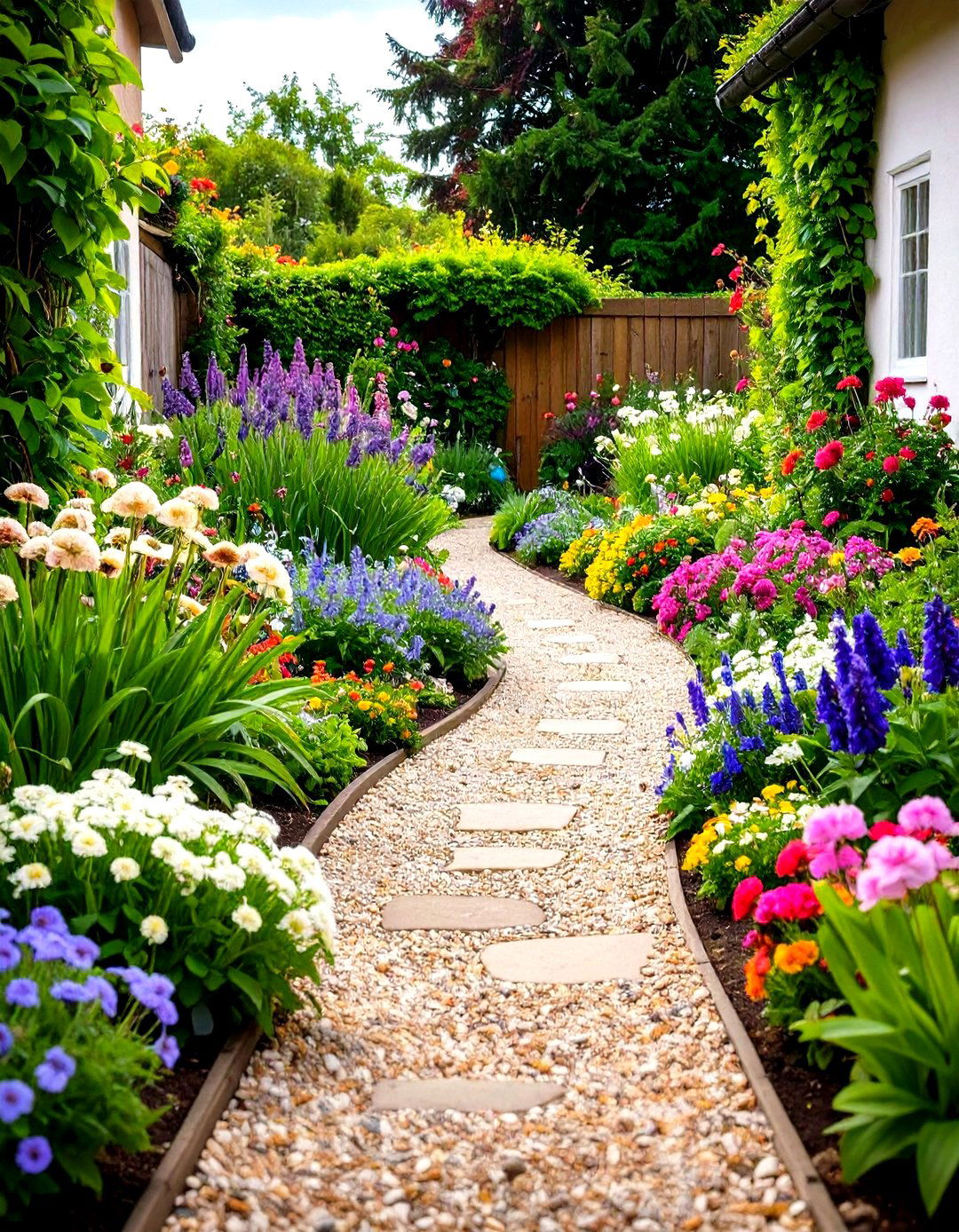
Embrace romantic cottage garden charm with meandering pea gravel paths bordered by overflowing flower beds filled with perennials, herbs, and climbing plants. This design encourages informal planting that spills naturally onto pathway edges, creating soft transitions between hardscape and garden beds. Traditional materials like brick edging or natural stone complement the cottage aesthetic while containing gravel effectively. The pathway curves gently through garden areas, connecting seating areas, arbors, or garden structures while maintaining sight lines to focal points. Seasonal plantings provide changing color displays throughout the year, while fragrant herbs and flowers enhance the sensory walking experience. Installation requires careful plant selection for appropriate mature sizes and growing conditions. Regular maintenance includes both gravel care and garden management to preserve the balance between structure and natural abundance.
8. Mediterranean-Style Pea Gravel Walkway with Terracotta Accents
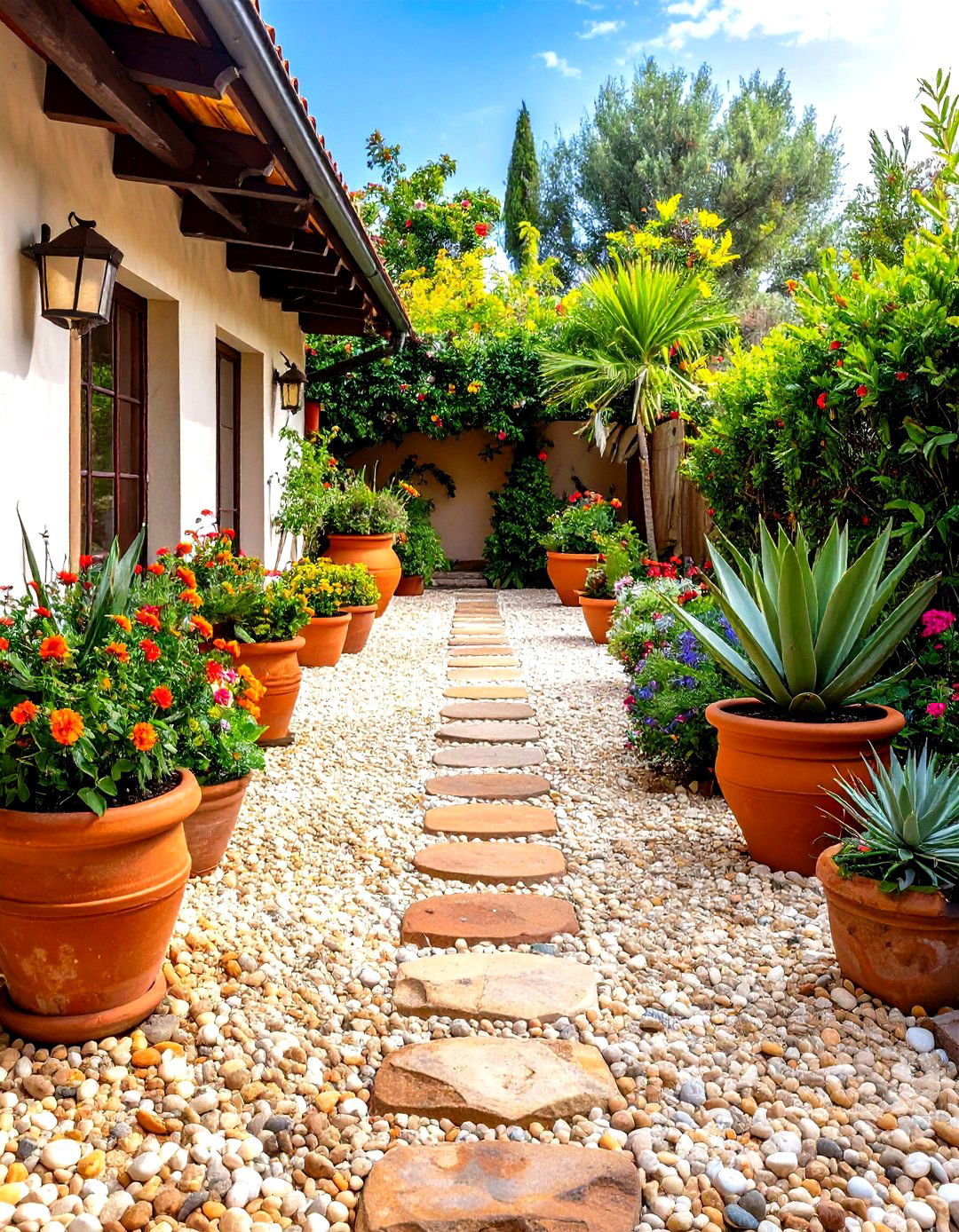
Channel warm Mediterranean climates with this sun-loving design featuring warm-toned pea gravel, terracotta edging elements, and drought-tolerant plantings. The color palette emphasizes earth tones including buff, tan, and rust-colored gravel that complements terracotta containers, decorative tiles, or brick borders. Strategic placement of potted herbs, olive trees, or succulents creates authentic Mediterranean atmosphere while providing fragrance and visual interest. This design works beautifully in sunny locations with well-draining soil conditions. The pathway may include wider areas for seating or container displays, creating outdoor room experiences reminiscent of European courtyards. Installation focuses on excellent drainage and heat-reflecting materials appropriate for warm climates. Maintenance includes seasonal plant care and gravel management to preserve the authentic Mediterranean character while ensuring pathway functionality.
9. Formal Garden Pea Gravel Walkway with Geometric Patterns
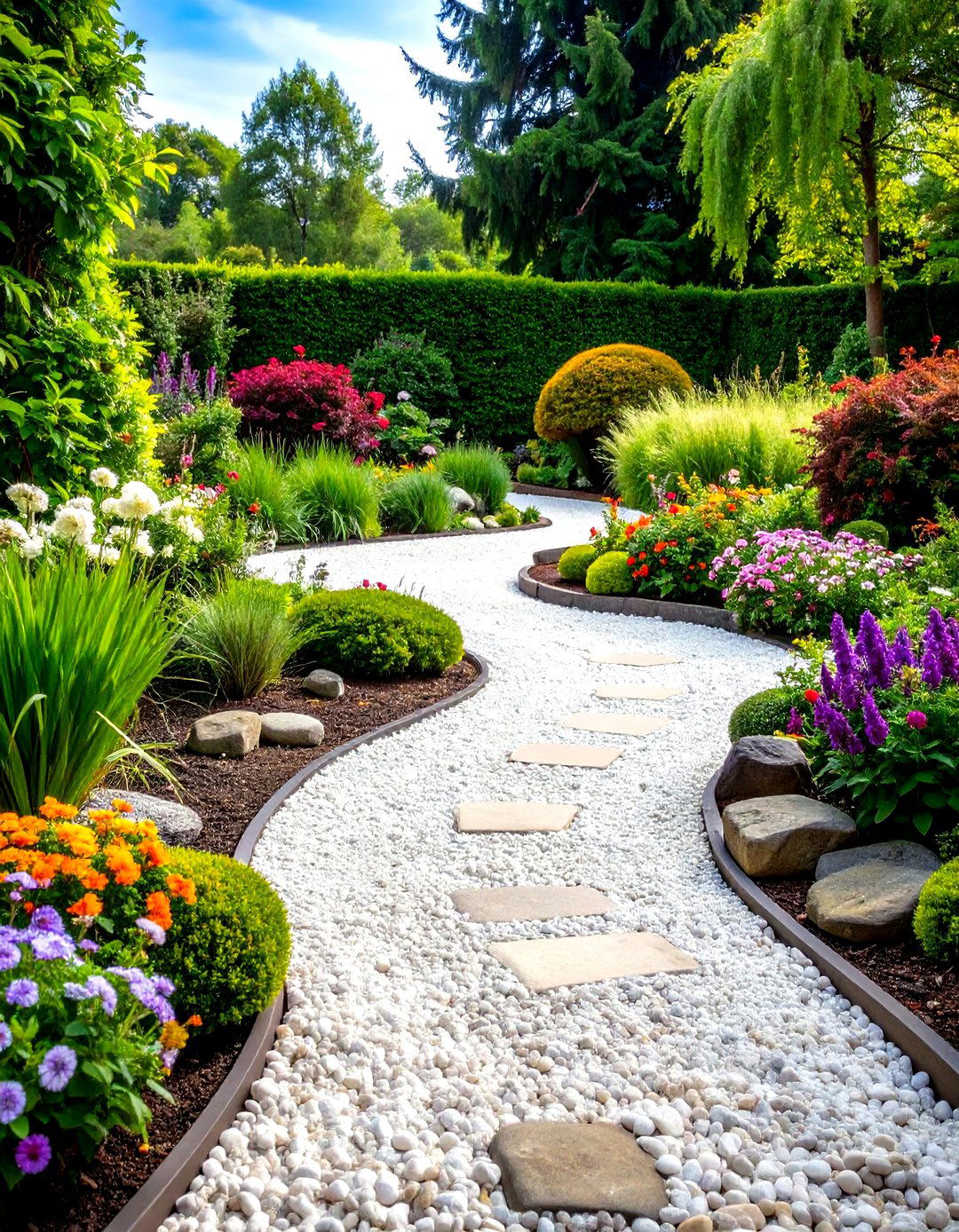
Sophisticated formal gardens benefit from structured pea gravel walkways featuring geometric patterns created through contrasting materials or precise edging arrangements. This design might incorporate different colored gravels, brick or stone inlays, or metal dividers creating squares, diamonds, or linear patterns within the pathway. The formal approach requires precise planning and installation to achieve clean lines and symmetrical layouts that complement structured landscapes. Boxwood hedging, formal plantings, or geometric garden beds enhance the design's architectural character. Color choices typically favor neutral tones like gray, white, or buff that provide elegant backdrops for garden features. Professional installation ensures pattern accuracy and long-term stability. Regular maintenance includes careful gravel management to preserve pattern definition and periodic edging adjustment to maintain crisp geometric lines essential to the formal aesthetic.
10. Rustic Woodland Pea Gravel Walkway with Log Edging
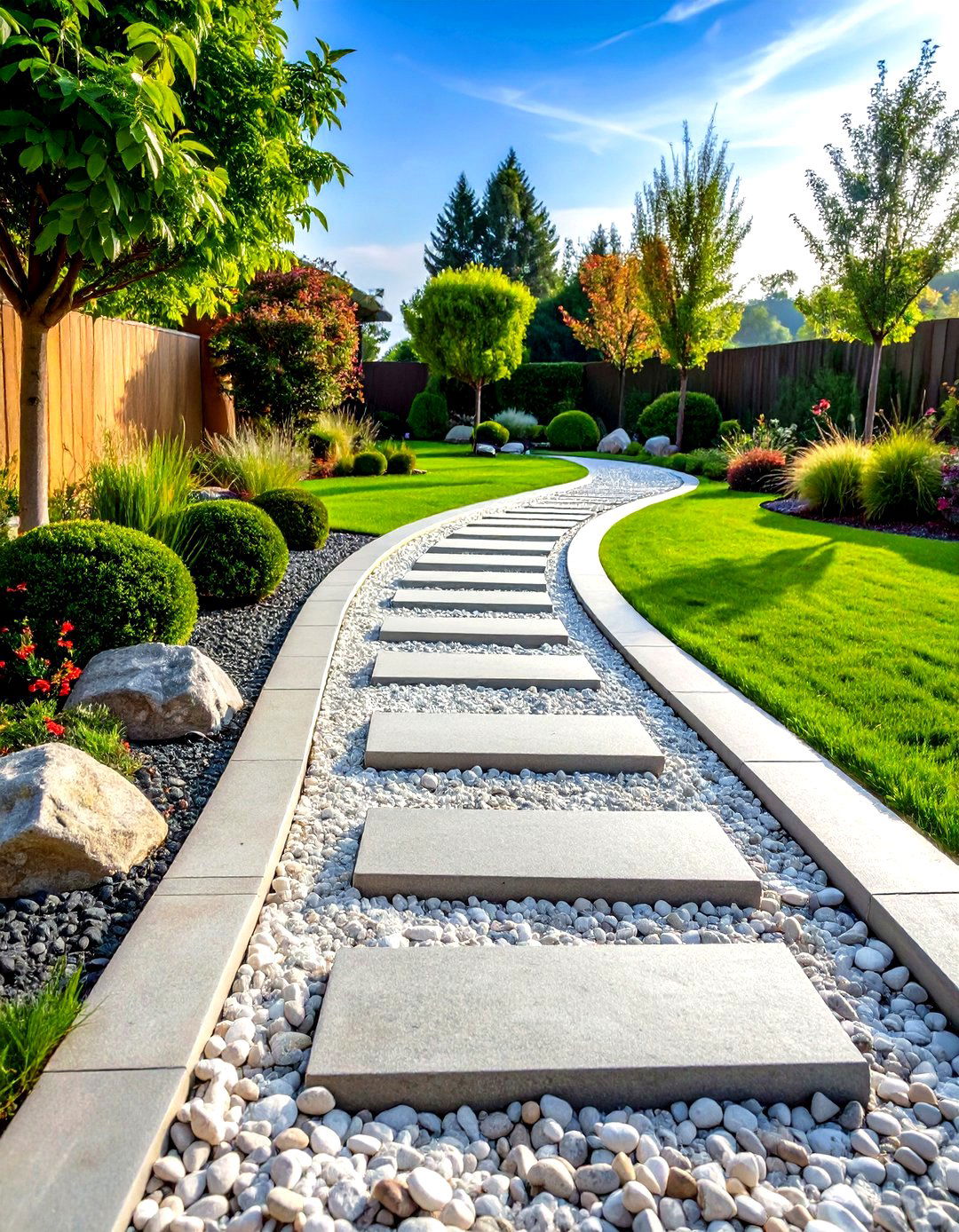
Natural woodland settings come alive with rustic pathways featuring locally sourced logs as edging materials combined with earth-toned pea gravel surfaces. This organic design uses fallen trees, salvaged lumber, or purpose-cut logs to create naturalistic borders that blend seamlessly with forest environments. The pathway winds through existing trees, around natural features, and connects clearings or seating areas while minimizing environmental impact. Native plantings like ferns, woodland wildflowers, or shade-loving perennials enhance the natural character. This approach suits properties with mature trees, natural areas, or rustic architectural styles. Installation requires careful log selection and placement to ensure stability and drainage while preserving existing root systems. Maintenance includes seasonal log inspection for stability and gravel management to maintain smooth walking surfaces through changing woodland conditions.
11. Contemporary Linear Pea Gravel Walkway with Concrete Strips
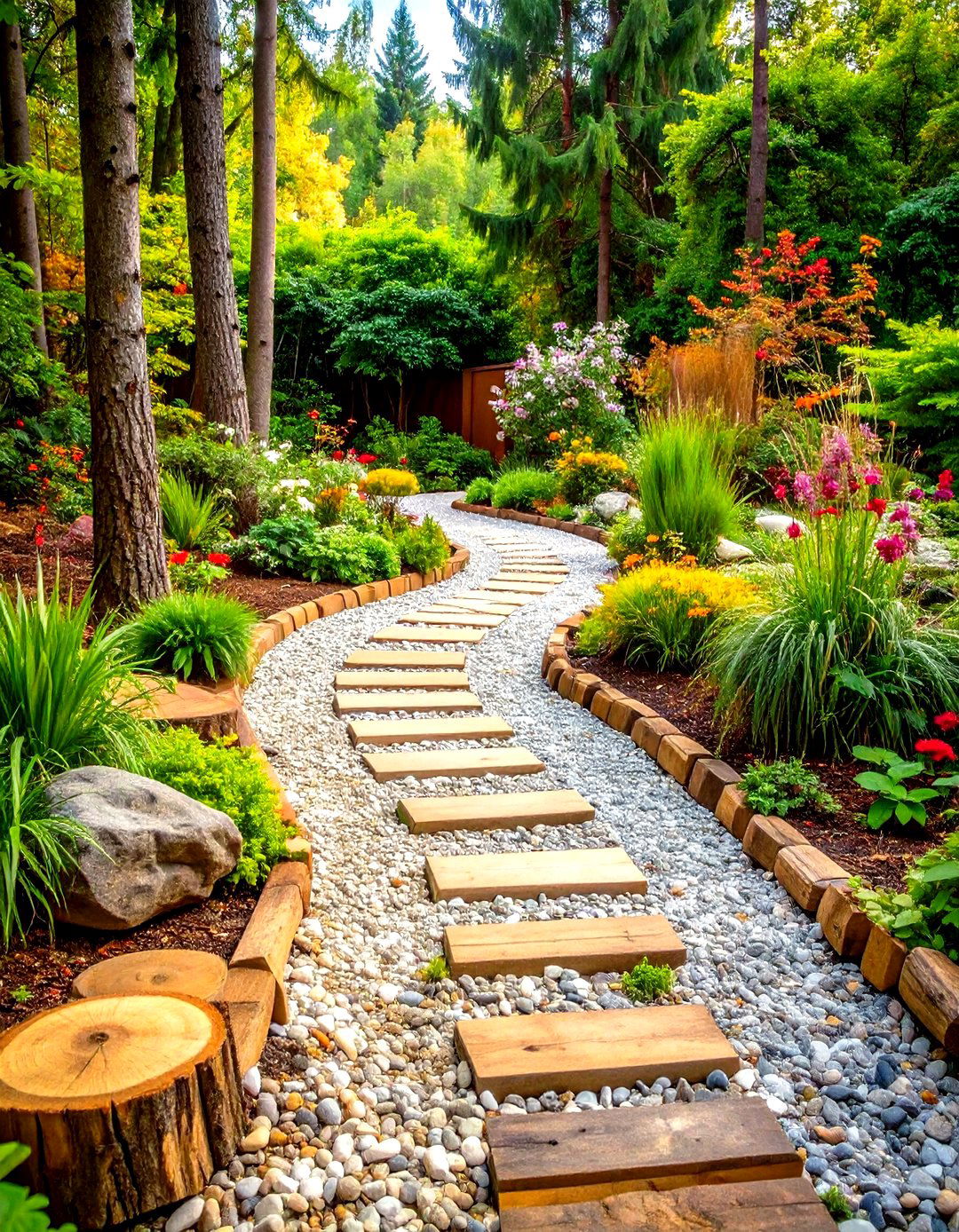
Modern architectural settings demand clean, linear designs featuring precise concrete strips dividing sections of uniform pea gravel for sophisticated contemporary appeal. This minimalist approach creates strong sight lines while providing practical walking surfaces and efficient drainage. The concrete elements may be poured in place or prefabricated, offering opportunities for integrated lighting, architectural details, or geometric patterns. Color coordination between concrete and gravel creates cohesive designs that complement modern homes and structured landscapes. This design works particularly well for entrance pathways, connecting outdoor living areas, or creating architectural transitions between spaces. Professional installation ensures proper concrete work and precise gravel placement for long-term performance. Maintenance focuses on keeping concrete clean and gravel evenly distributed to preserve the design's crisp, contemporary character essential to modern landscape aesthetics.
12. Coastal-Themed Pea Gravel Walkway with Driftwood Elements
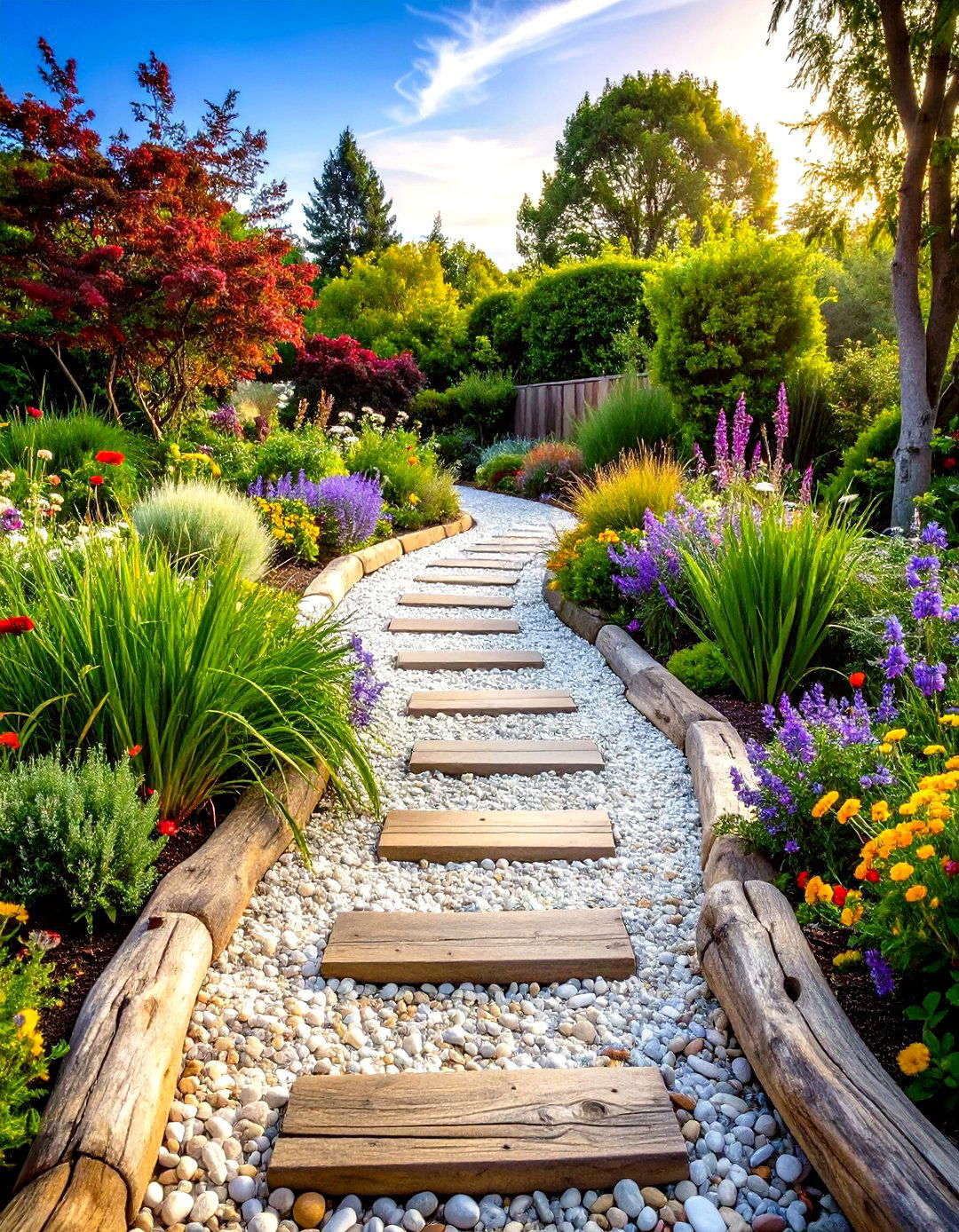
Seaside properties and coastal-inspired gardens flourish with pathways featuring weathered driftwood edging and light-colored pea gravel reminiscent of beach environments. This design incorporates naturally weathered wood pieces, seashells, or coastal plants to create authentic marine atmospheres. The color palette emphasizes whites, grays, and sandy tones that reflect coastal lighting and complement beach house architecture. Strategic plantings might include ornamental grasses, succulents, or salt-tolerant perennials that thrive in coastal conditions. The pathway design can include wider areas for seating or displaying coastal artifacts, creating outdoor spaces that celebrate seaside living. Installation requires attention to drainage and wind resistance appropriate for coastal environments. Maintenance includes seasonal driftwood arrangement and gravel management to preserve the authentic coastal character while ensuring pathway functionality in challenging weather conditions.
13. Victorian-Style Pea Gravel Walkway with Ornate Brick Borders

Historic properties and traditional gardens benefit from elegant Victorian-inspired pathways featuring decorative brick edging patterns combined with period-appropriate pea gravel colors. This formal design might incorporate running bond, herringbone, or basket weave brick patterns creating sophisticated borders that complement Victorian architecture and garden styles. The gravel colors typically favor neutral tones like gray or buff that provide elegant backdrops for colorful Victorian plantings including roses, perennials, and annual displays. The pathway width and curves reflect Victorian garden design principles emphasizing both functionality and ornamental beauty. Installation requires skilled brick work and careful attention to historical accuracy and drainage requirements. Maintenance includes seasonal brick inspection and pointing repair alongside regular gravel management to preserve the authentic Victorian character while ensuring safe, attractive walking surfaces.
14. Asian-Inspired Pea Gravel Walkway with Stone Lanterns
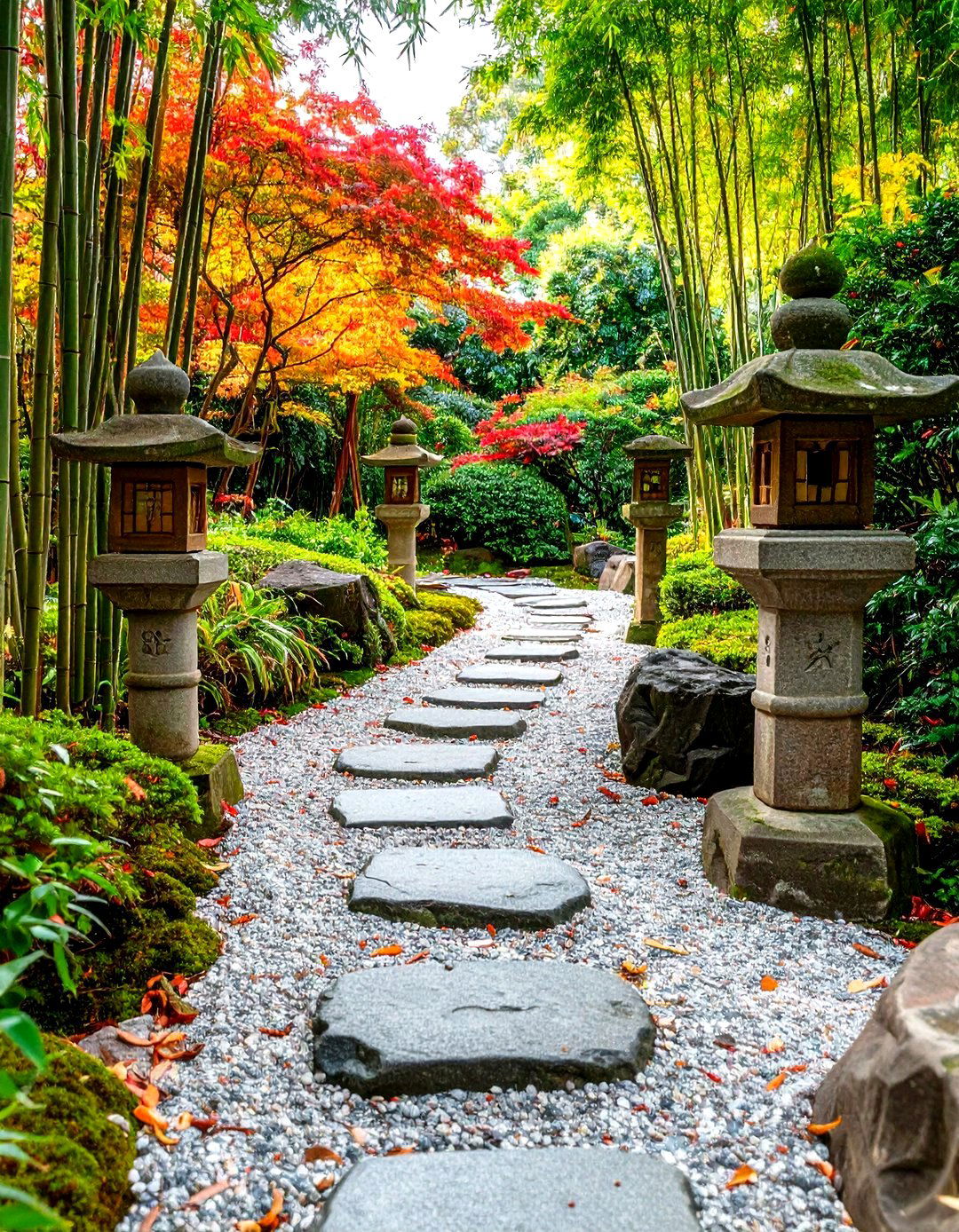
Eastern garden philosophy influences this contemplative design featuring carefully chosen pea gravel colors complemented by stone lanterns, bamboo elements, and strategic plantings creating peaceful walking experiences. The design emphasizes balance, asymmetry, and natural materials reflecting traditional Asian garden principles. Stone placement, plant selection, and pathway curves follow feng shui concepts promoting positive energy flow through outdoor spaces. Color choices typically favor neutral gravel tones that provide calm backgrounds for seasonal plant displays and architectural elements. The pathway may include wider meditation areas or viewing spots positioned to frame garden vistas or water features. Installation requires understanding of Asian design principles and careful material selection for authenticity. Maintenance includes regular gravel raking, stone cleaning, and plant care to preserve the peaceful, contemplative atmosphere essential to Asian-inspired garden designs.
15. Herb Garden Pea Gravel Walkway with Raised Planting Beds
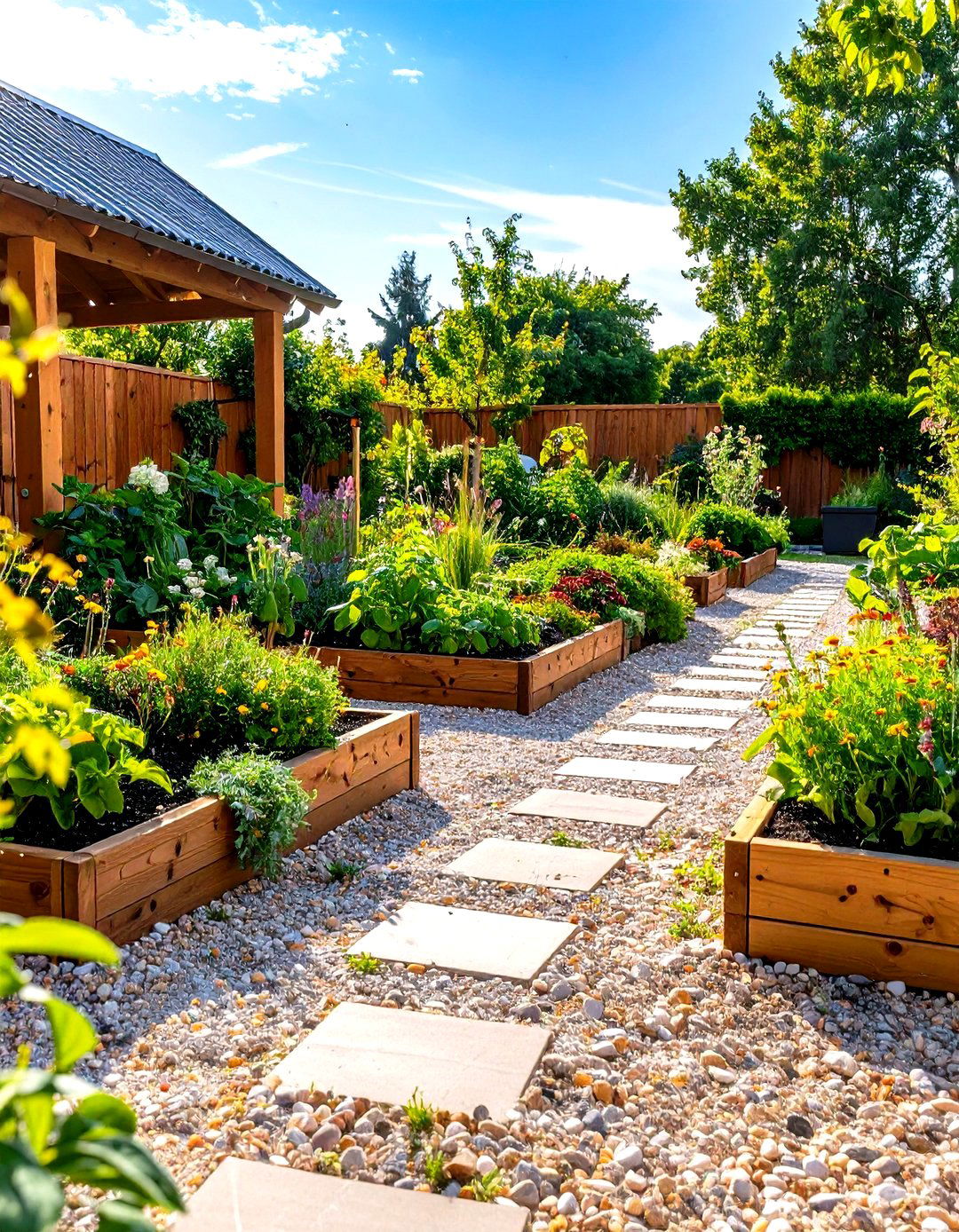
Practical kitchen gardens flourish with functional pathways featuring pea gravel surfaces bordered by raised herb beds constructed from wood, stone, or metal materials. This design provides easy access to culinary plants while maintaining clean, well-draining walking surfaces that prevent mud and soil tracking. The pathway width accommodates wheelbarrows, garden carts, and comfortable harvesting access while the gravel surface suppresses weeds and requires minimal maintenance. Herb selection might include Mediterranean varieties, culinary favorites, or medicinal plants organized by height, harvest timing, or growing requirements. The design can incorporate seating areas, tool storage, or washing stations creating complete herb garden experiences. Installation requires proper raised bed construction and drainage planning for both pathway and planting areas. Maintenance includes seasonal herb care, gravel management, and raised bed soil amendment to maintain productive, attractive herb garden pathways.
16. Lighting-Enhanced Pea Gravel Walkway with LED Integration
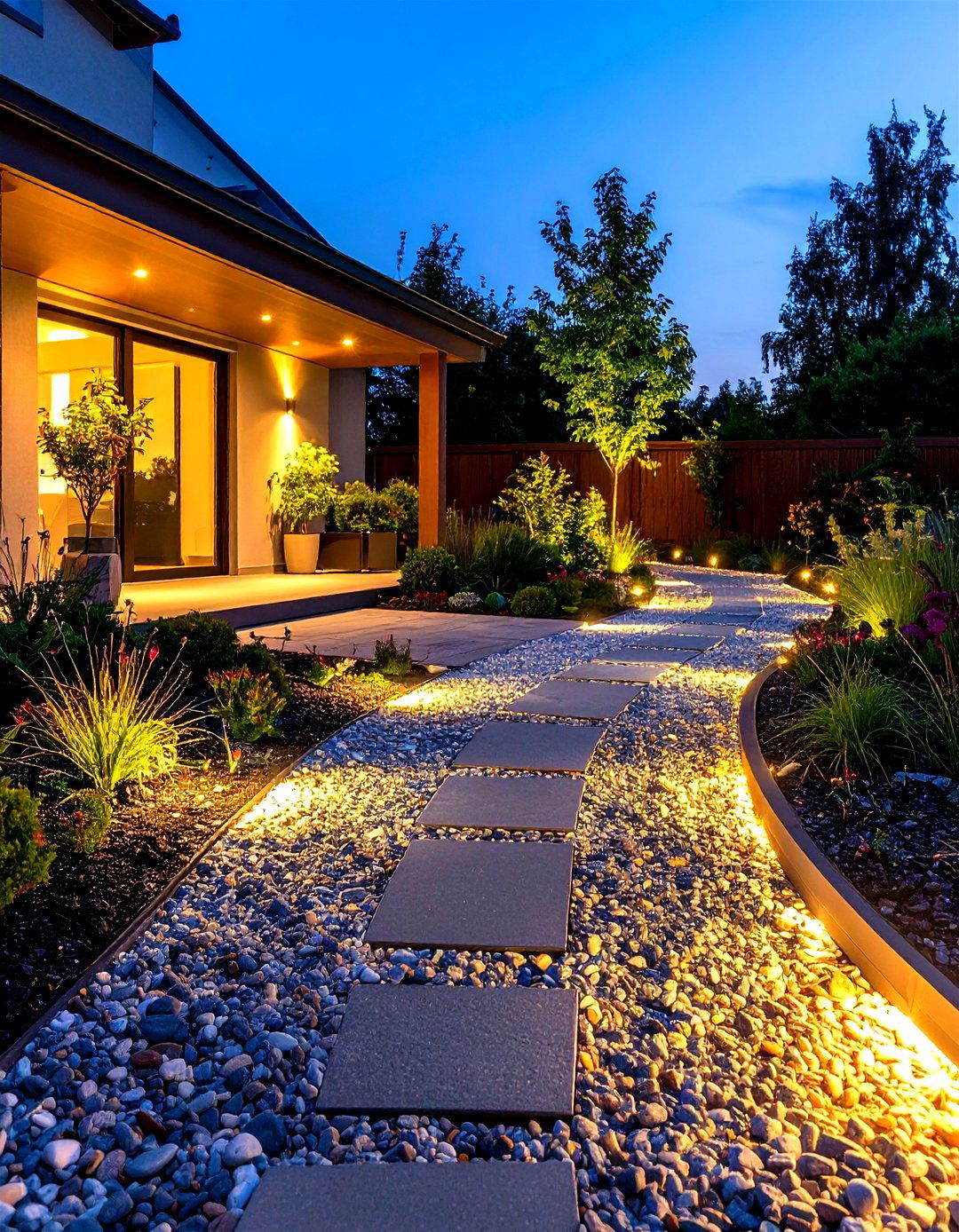
Evening garden enjoyment reaches new heights with pathways featuring integrated LED lighting systems within pea gravel surfaces or along pathway edges. This sophisticated design combines practical illumination with dramatic nighttime aesthetics using solar-powered fixtures, low-voltage systems, or smart lighting controls. The lighting may include path lights, recessed fixtures, or programmable color-changing elements creating customizable ambiance for different occasions. Installation requires electrical planning, proper fixture selection for outdoor conditions, and integration with existing landscape lighting systems. The gravel surface provides excellent light distribution while concealing wiring and fixtures during daylight hours. This design works exceptionally well for entertaining areas, security lighting, or creating magical garden atmospheres. Maintenance includes seasonal fixture cleaning, battery replacement for solar systems, and gravel management to maintain optimal light distribution and pathway functionality.
17. Multi-Colored Pea Gravel Walkway with Pattern Design
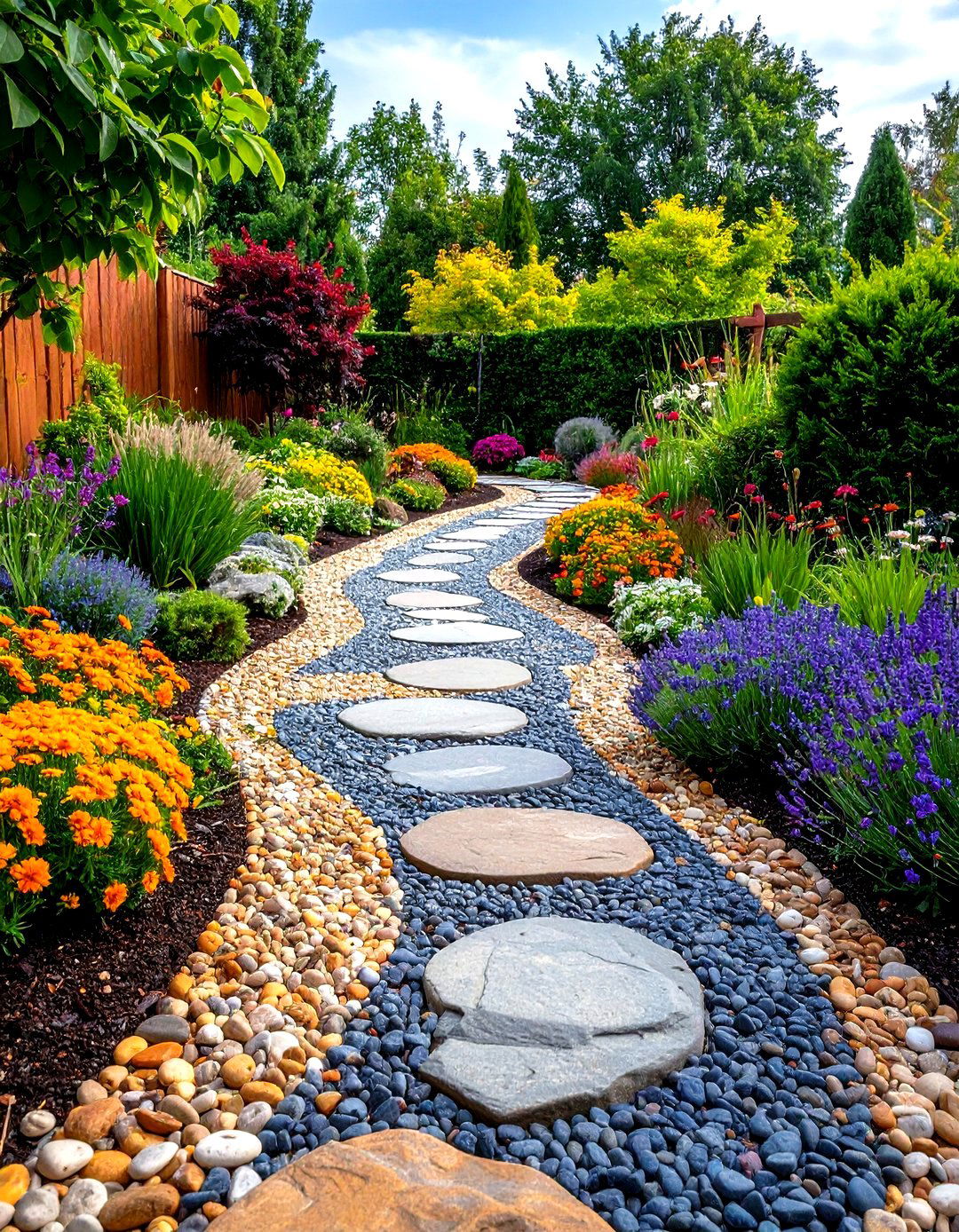
Creative expression flourishes in pathways featuring multiple pea gravel colors arranged in artistic patterns, geometric designs, or naturalistic flowing compositions. This design approach uses contrasting gravel colors like white and gray, tan and red, or buff and charcoal to create visual interest and unique landscape features. Pattern options include stripes, spirals, curves, or abstract designs limited only by imagination and material availability. Precise edging systems maintain pattern definition while proper installation techniques prevent color mixing over time. This approach suits contemporary gardens, artistic landscapes, or properties where walkways serve as focal points rather than simply functional elements. Installation requires careful planning, pattern layout, and systematic gravel placement for lasting results. Maintenance includes periodic pattern touch-ups and gravel separation to preserve design clarity while ensuring safe, attractive walking surfaces.
18. Permeable Pea Gravel Walkway with Sustainable Features
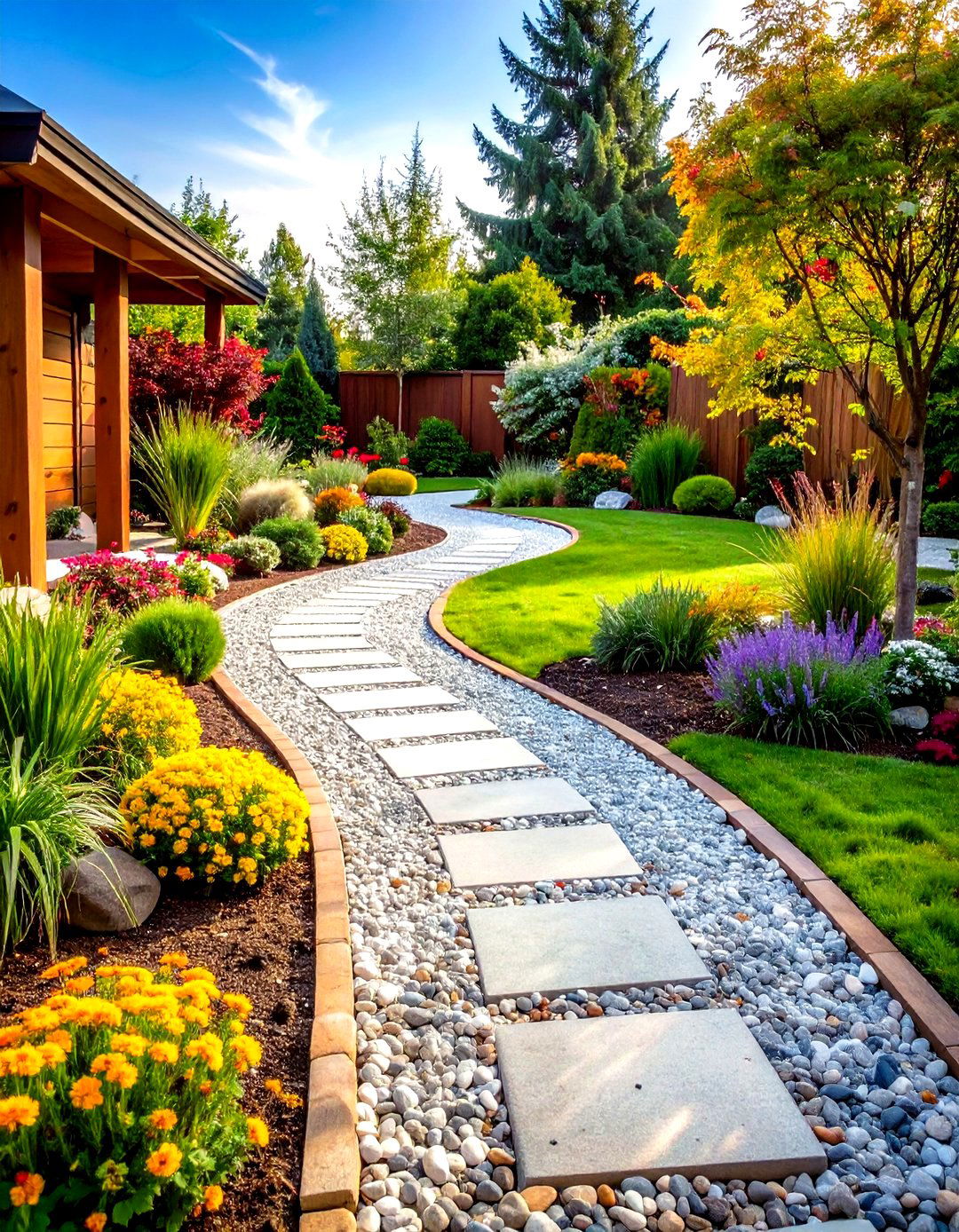
Environmental consciousness drives this eco-friendly design featuring pea gravel pathways optimized for stormwater management, reduced environmental impact, and sustainable material usage. The design incorporates recycled materials, locally sourced gravel, and native plantings creating environmentally responsible landscape solutions. Advanced drainage systems may include permeable underlayments, bioswale integration, or rainwater collection features that manage runoff while maintaining pathway functionality. Plant selections emphasize native species, pollinator-friendly varieties, or edible landscaping that supports local ecosystems. This approach appeals to environmentally conscious homeowners and properties seeking LEED certification or sustainable landscape recognition. Installation requires knowledge of local regulations, proper drainage engineering, and sustainable material sourcing. Maintenance focuses on preserving environmental benefits while ensuring pathway performance through seasonal changes and weather challenges.
19. Artistic Mosaic Pea Gravel Walkway with Decorative Inlays
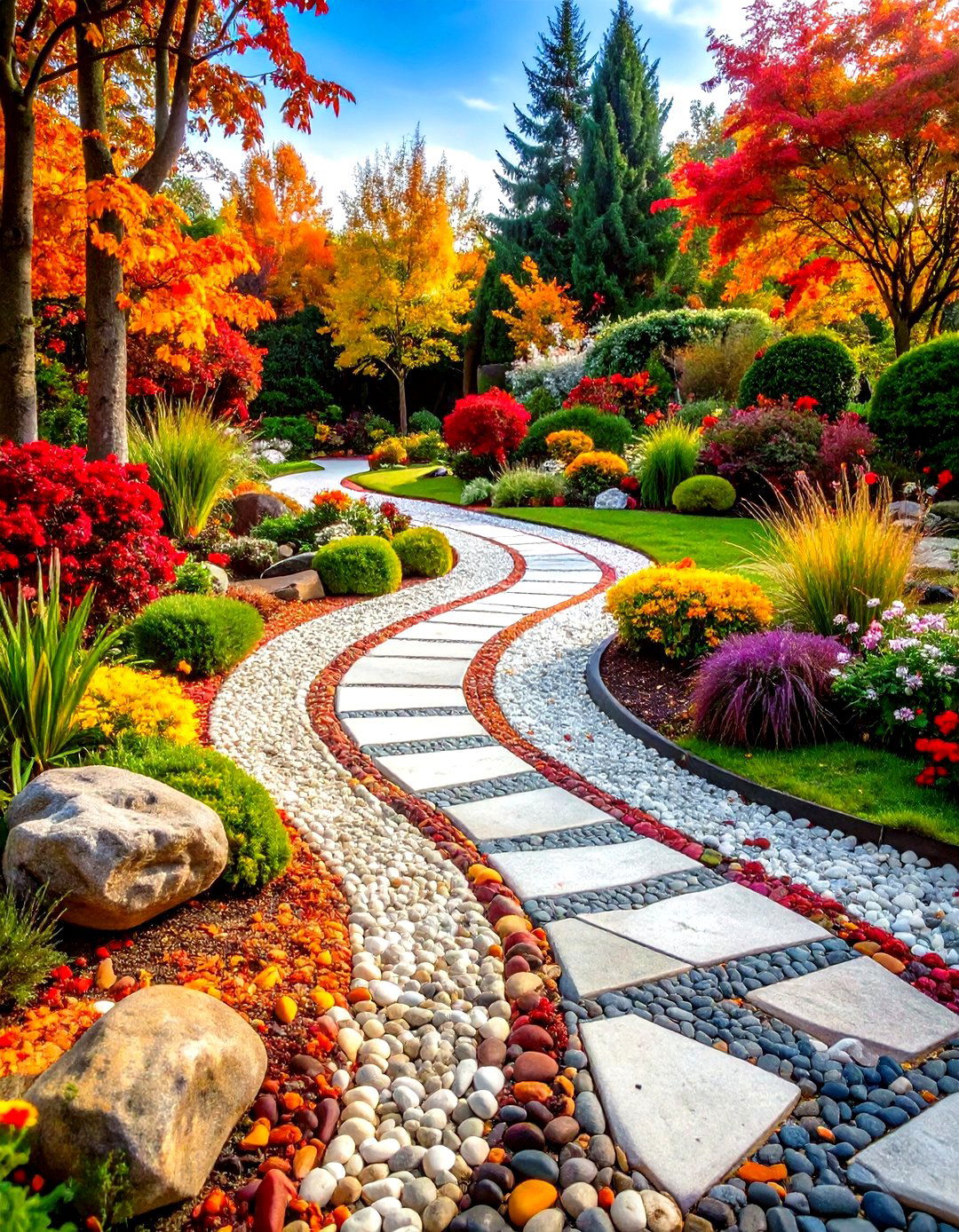
Creative pathways reach artistic heights through strategic placement of mosaic inlays, decorative stones, or artistic elements within traditional pea gravel surfaces. This design transforms functional walkways into artistic expressions using materials like colored stones, ceramic tiles, glass elements, or sculptural components creating personalized landscape features. The artistic elements may reflect personal interests, cultural themes, or natural motifs while maintaining pathway functionality and safety. Color coordination between gravel and artistic elements creates cohesive designs that enhance rather than overwhelm surrounding landscapes. This approach suits properties where artistic expression is valued and walkways serve as gallery spaces for outdoor art. Installation requires artistic planning, precise placement techniques, and proper material selection for weather resistance. Maintenance includes artistic element care and gravel management to preserve both functional and aesthetic qualities.
20. Three-Season Pea Gravel Walkway with Winter Accessibility
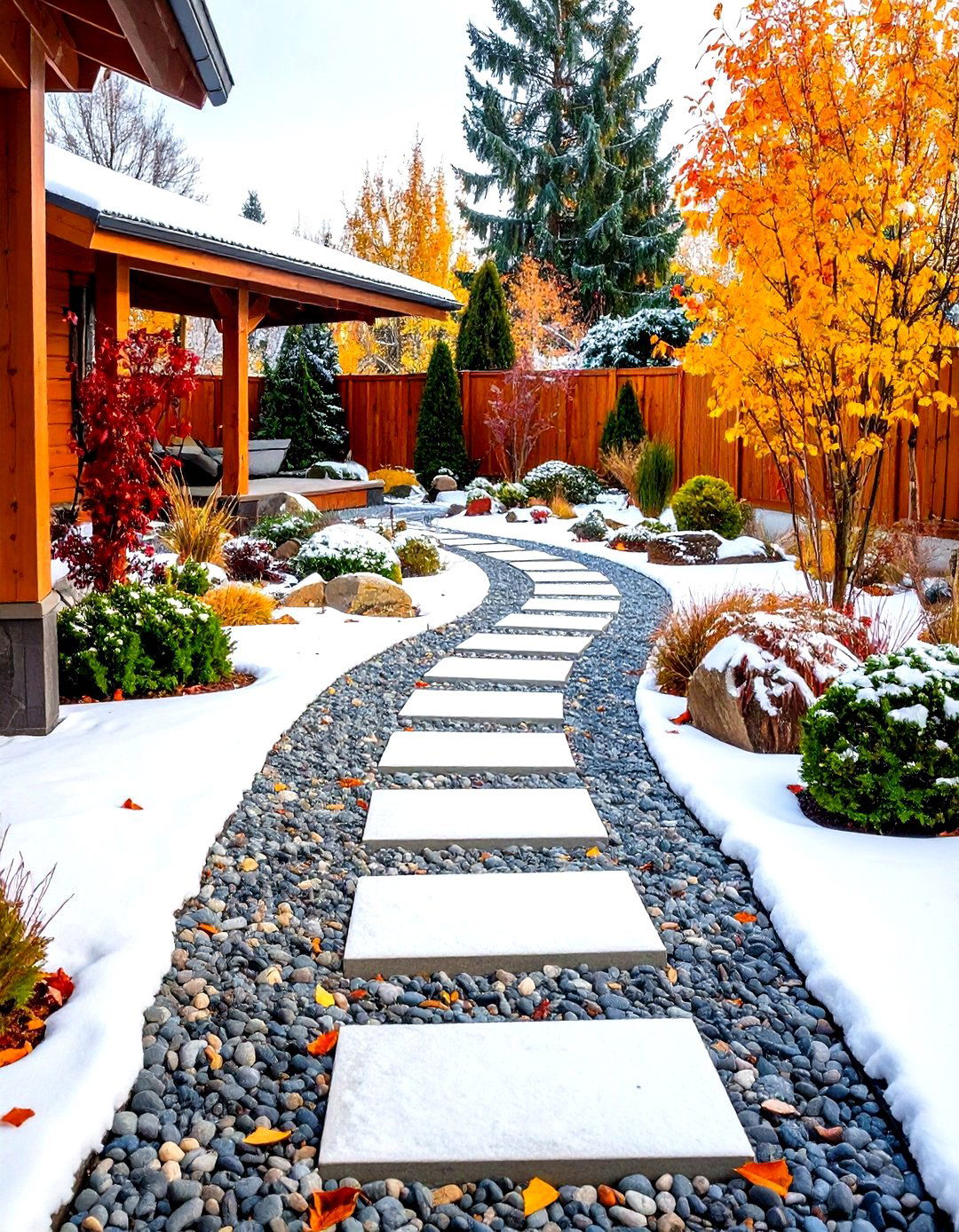
Climate-conscious design addresses seasonal challenges through pathways featuring pea gravel surfaces optimized for three-season use with winter accessibility features. This practical approach includes proper drainage systems, strategic pathway placement, and material selection ensuring year-round functionality despite weather changes. The design may incorporate heating elements, snow-melting systems, or alternative winter materials maintaining safe passage during harsh weather. Plant selections emphasize four-season interest including evergreen elements, winter berries, or architectural plant forms providing visual appeal throughout the year. This design suits northern climates where seasonal weather variations require practical landscape solutions. Installation requires climate-appropriate materials, proper drainage engineering, and integration with winter maintenance systems. Maintenance includes seasonal preparation, snow management techniques, and gravel care preserving pathway functionality while adapting to changing weather conditions and seasonal landscape requirements.
Conclusion:
Pea gravel walkways offer endless design possibilities combining natural beauty, practical functionality, and budget-friendly installation. From traditional cottage garden paths to contemporary geometric designs, these versatile surfaces adapt to any landscape style while providing excellent drainage and low maintenance requirements. The twenty design concepts presented showcase creative approaches incorporating various edging materials, color combinations, and integration techniques. Success depends on proper planning, quality installation, and regular maintenance preserving both aesthetic appeal and functional performance. Whether seeking simple garden paths or sophisticated landscape features, pea gravel walkways deliver lasting value enhancing outdoor spaces for years of enjoyment.


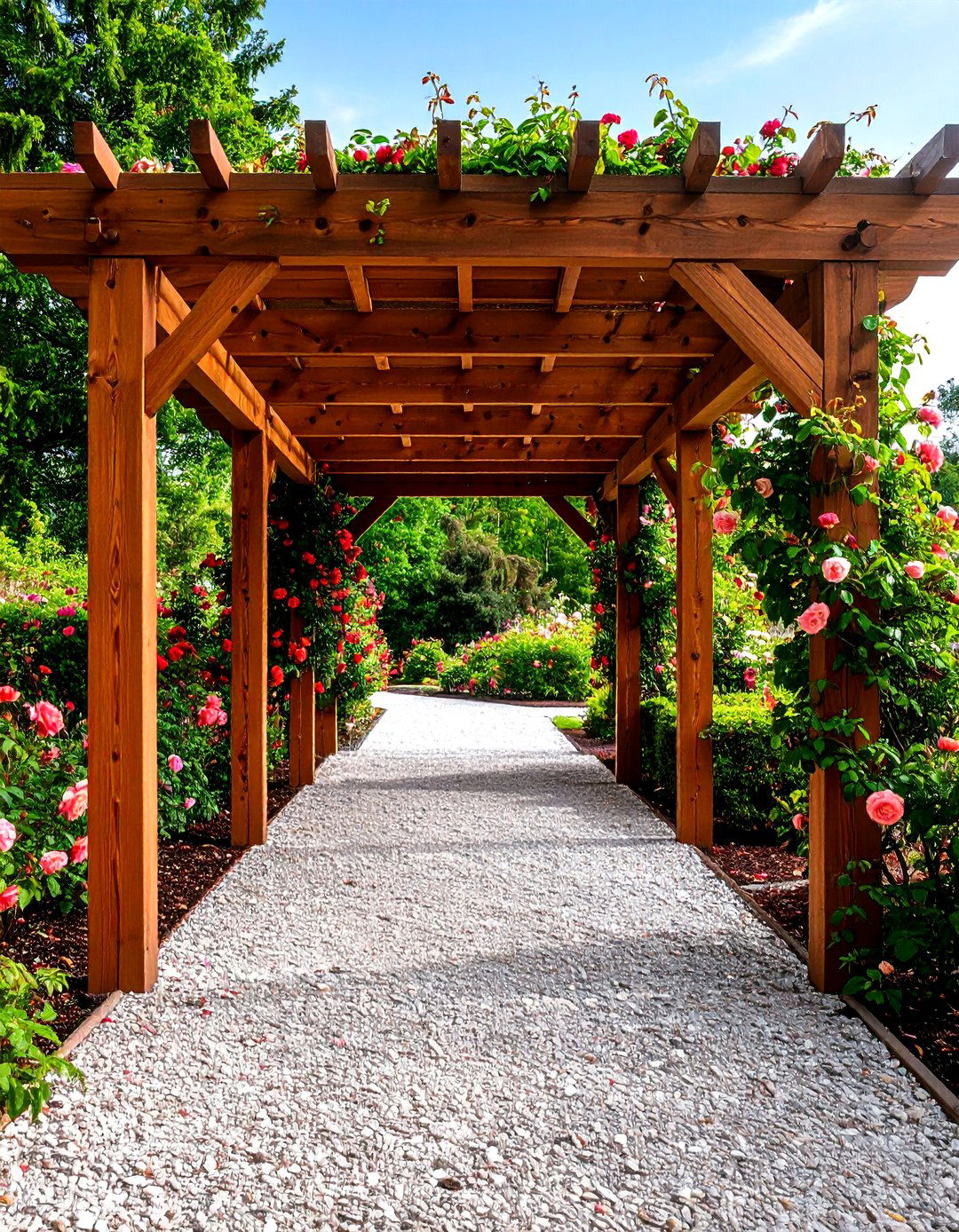
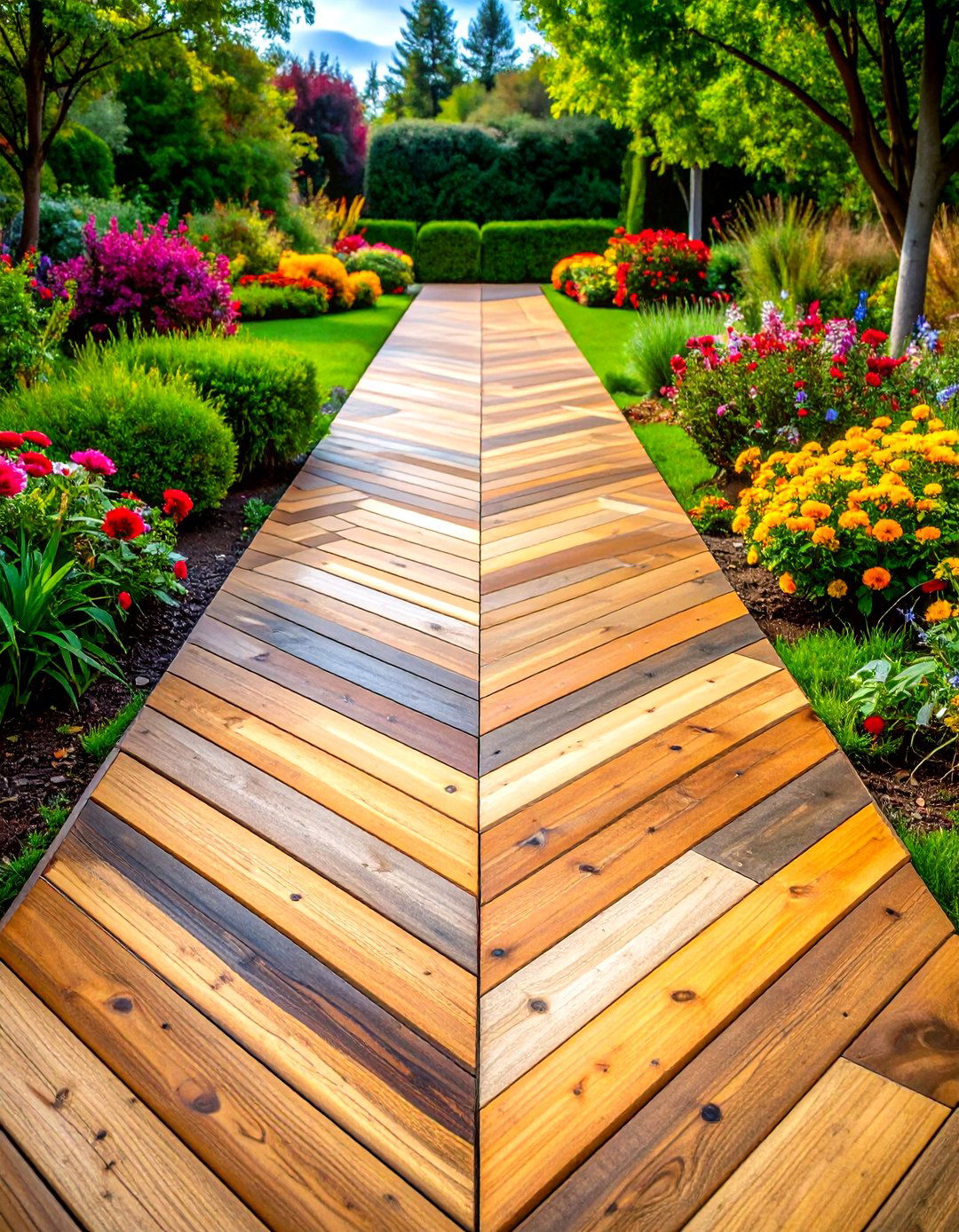
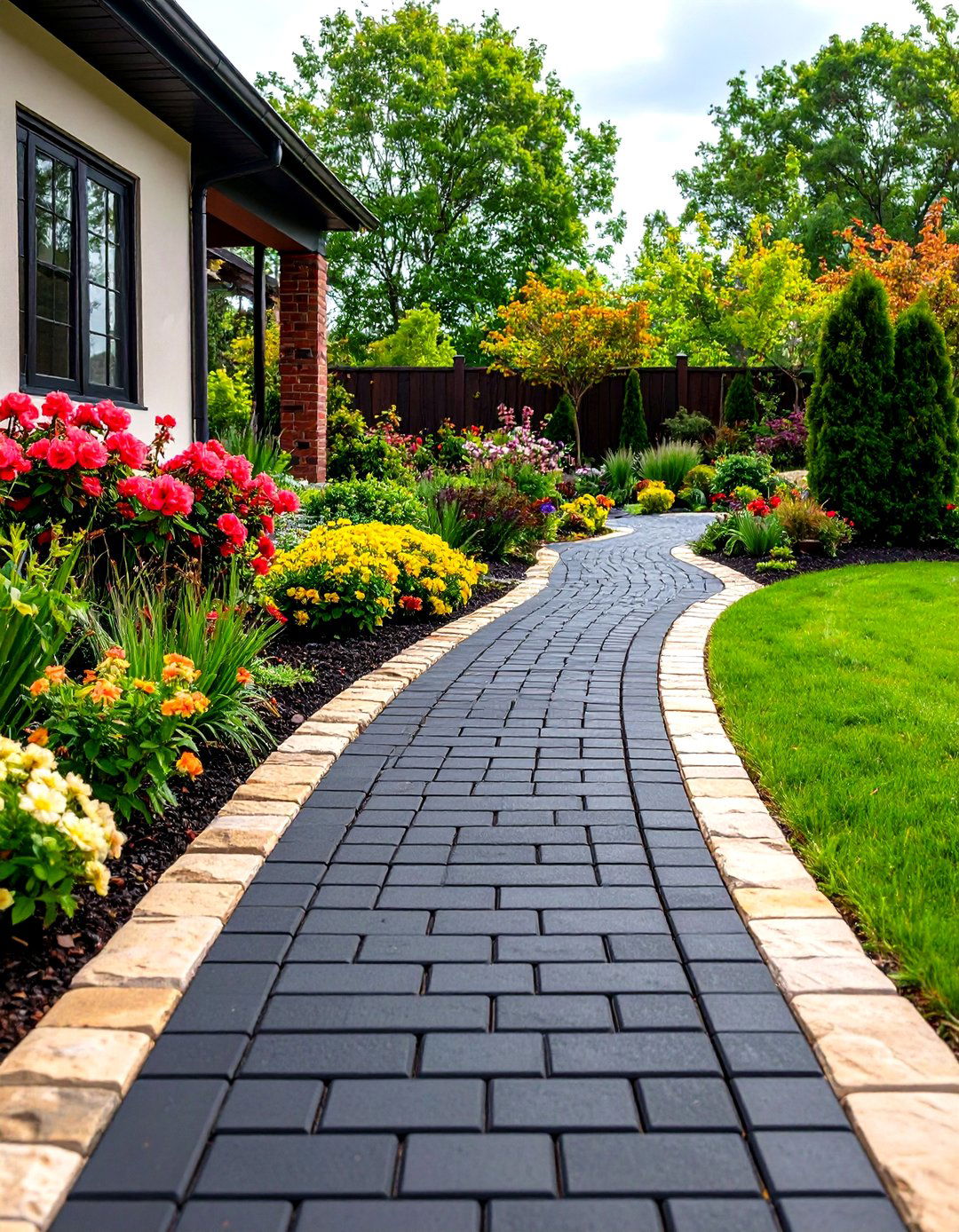
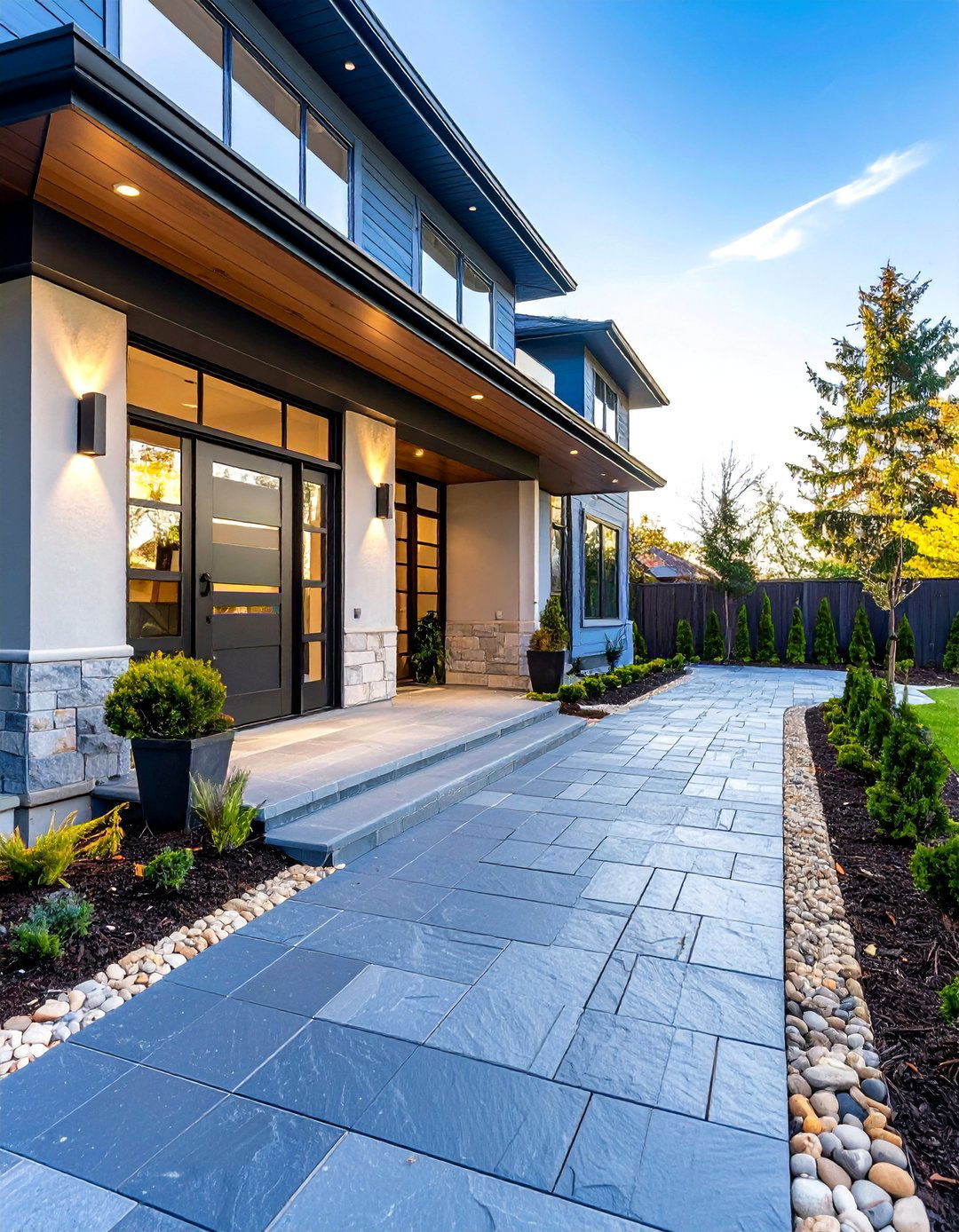
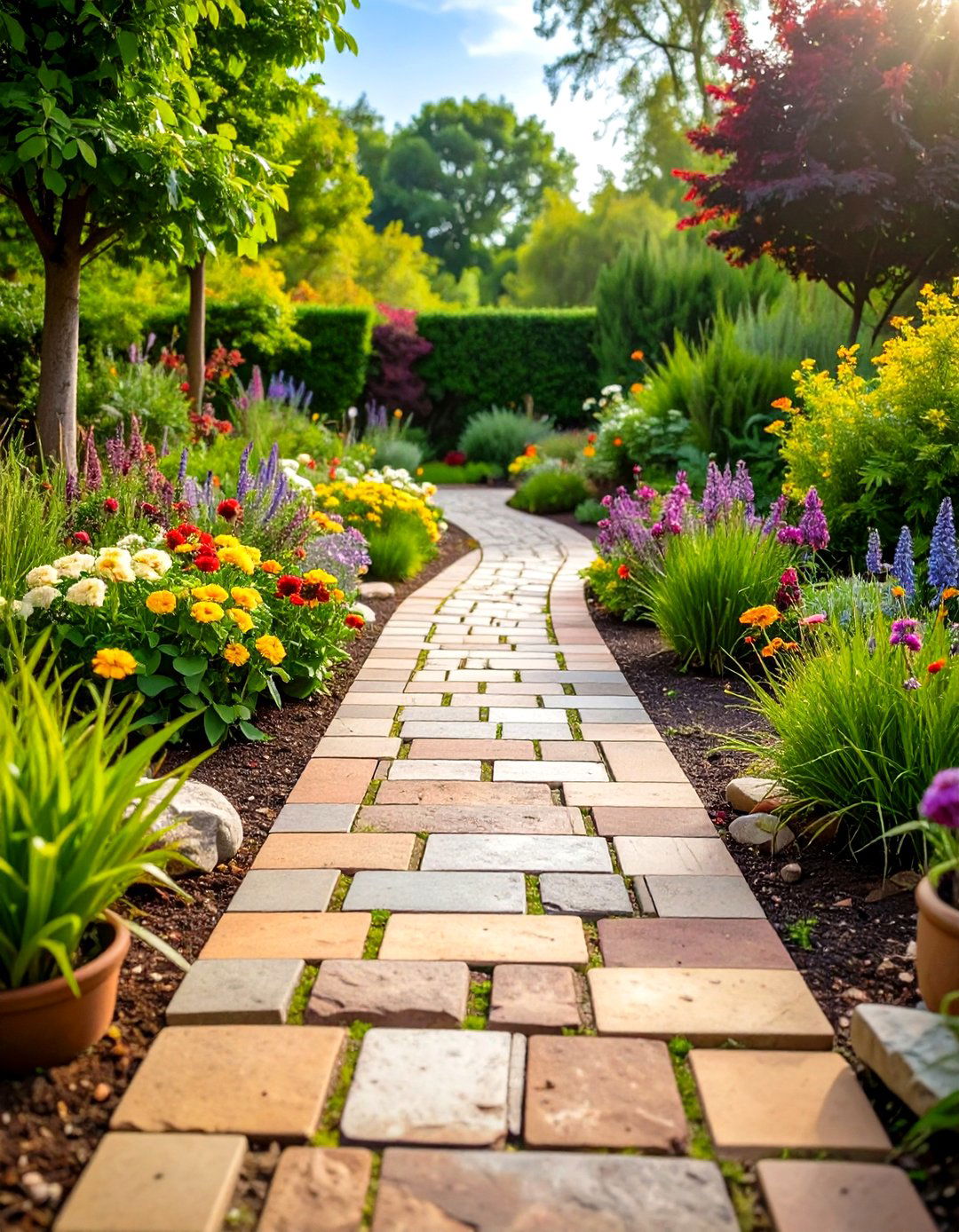


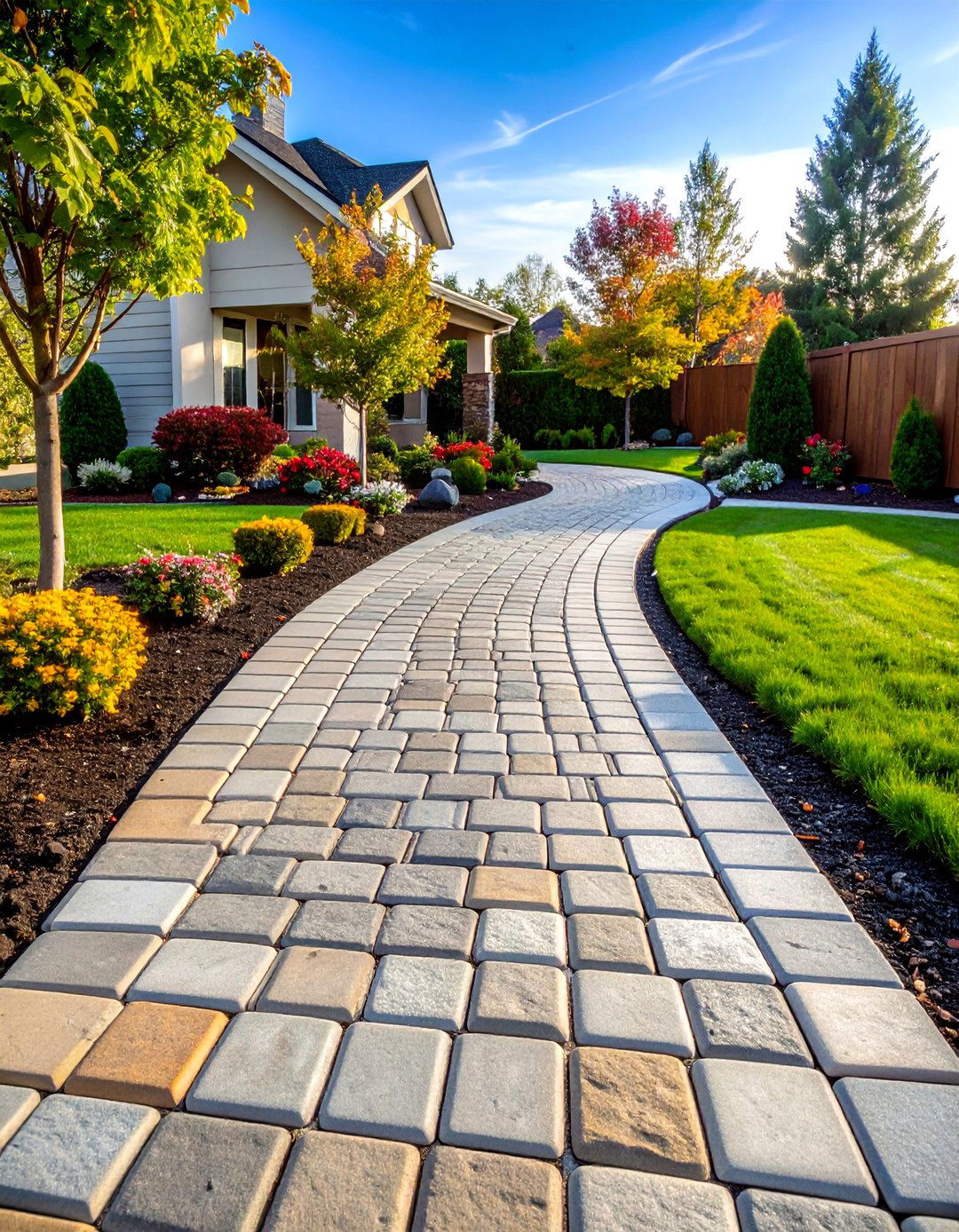
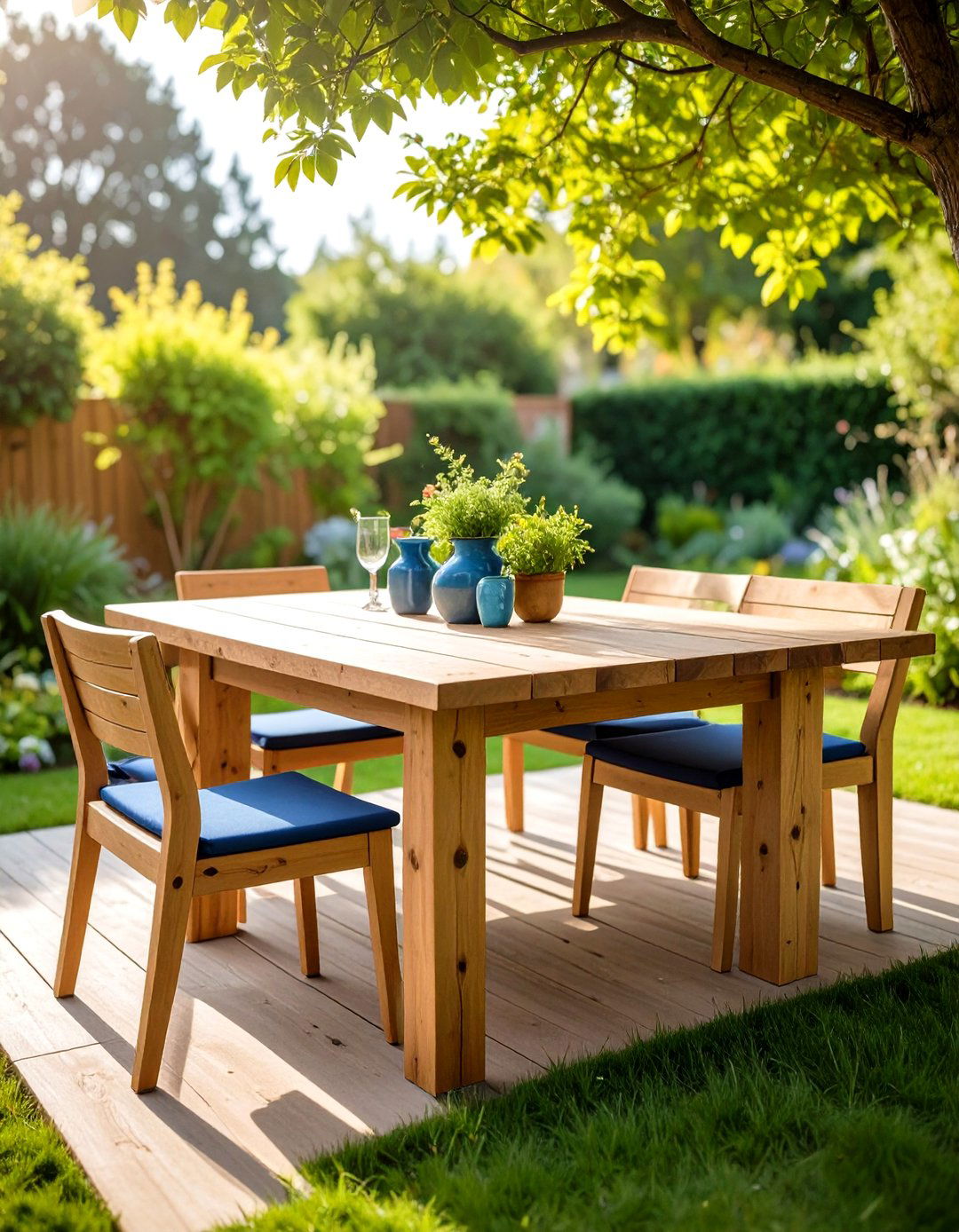

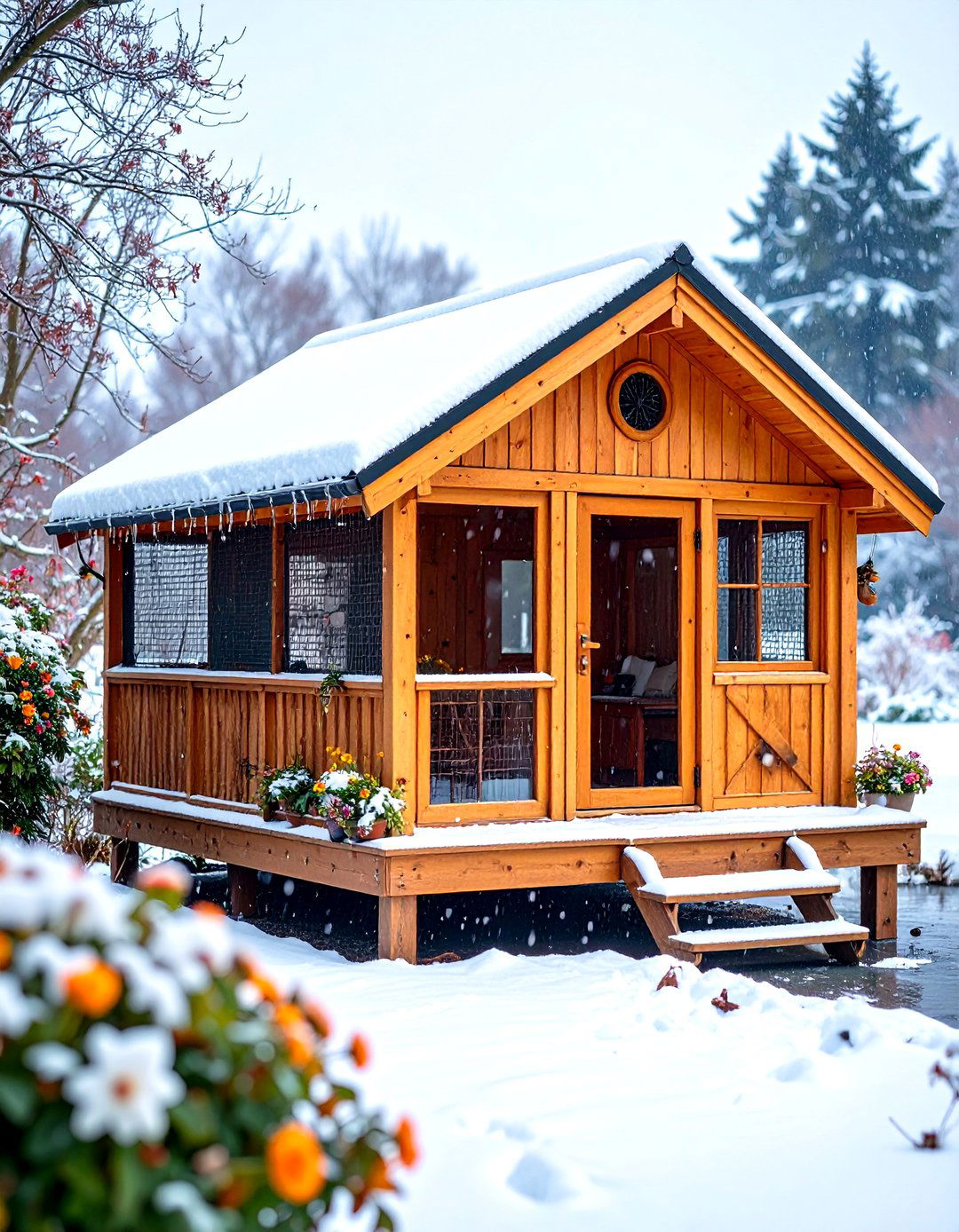

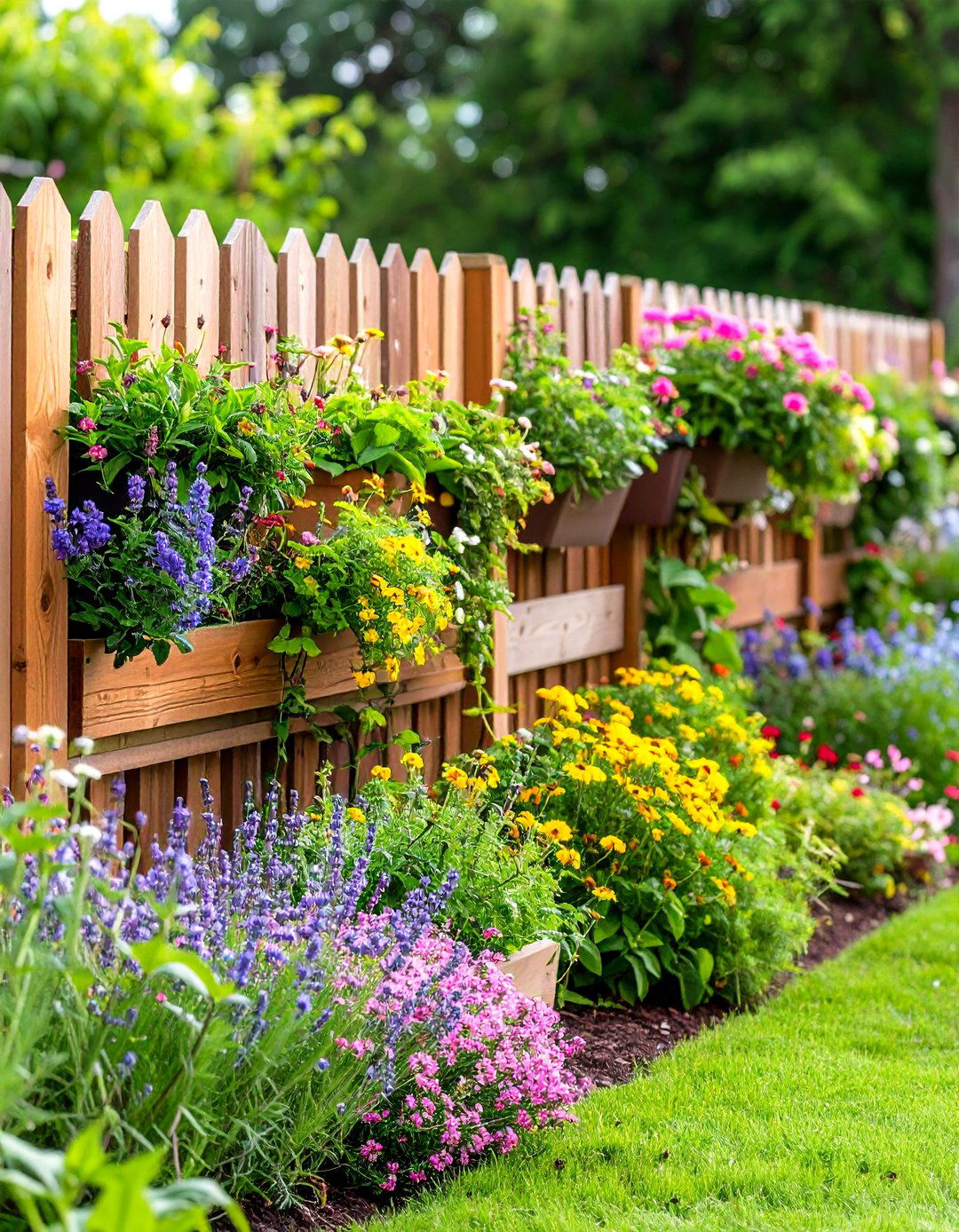
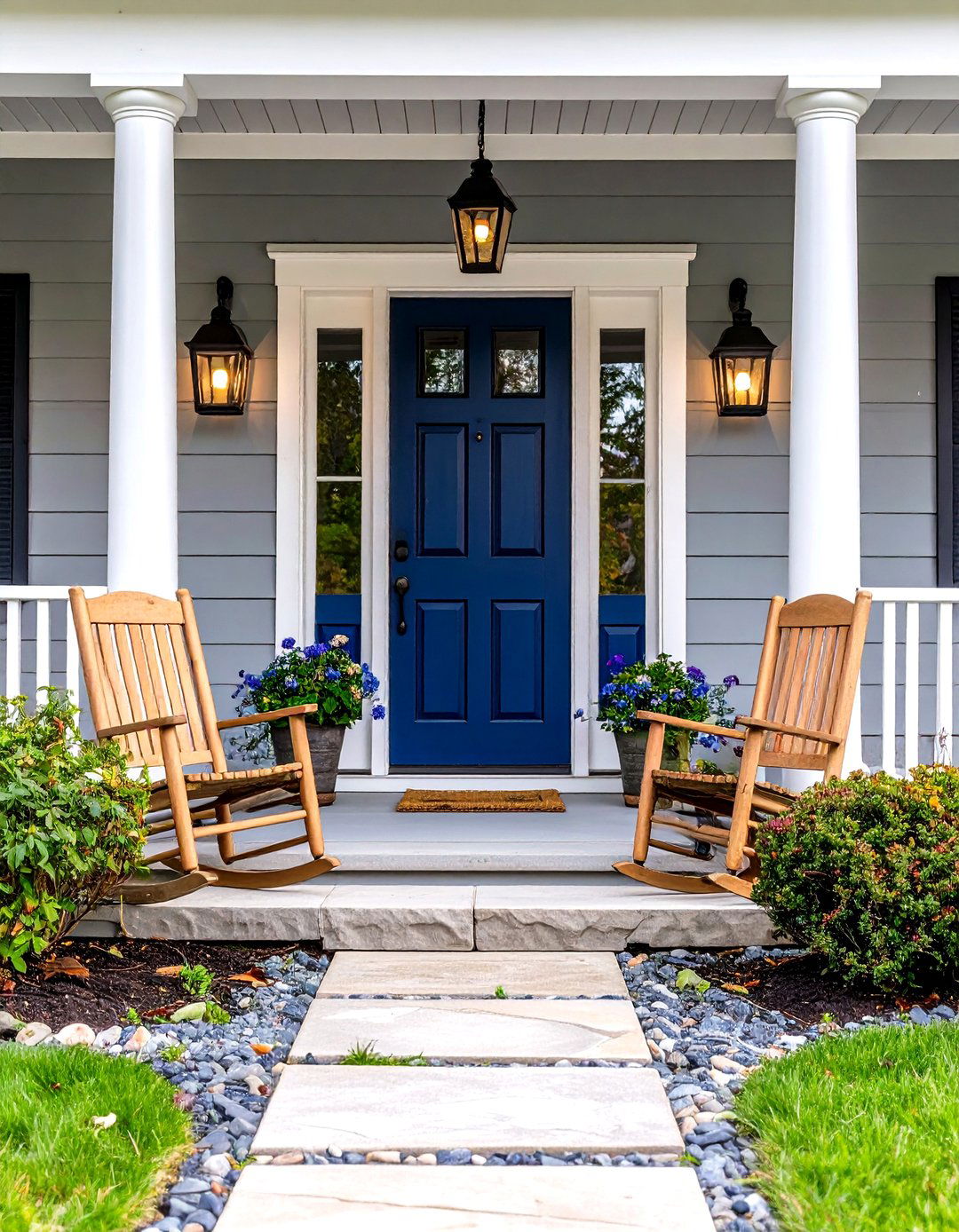

Leave a Reply